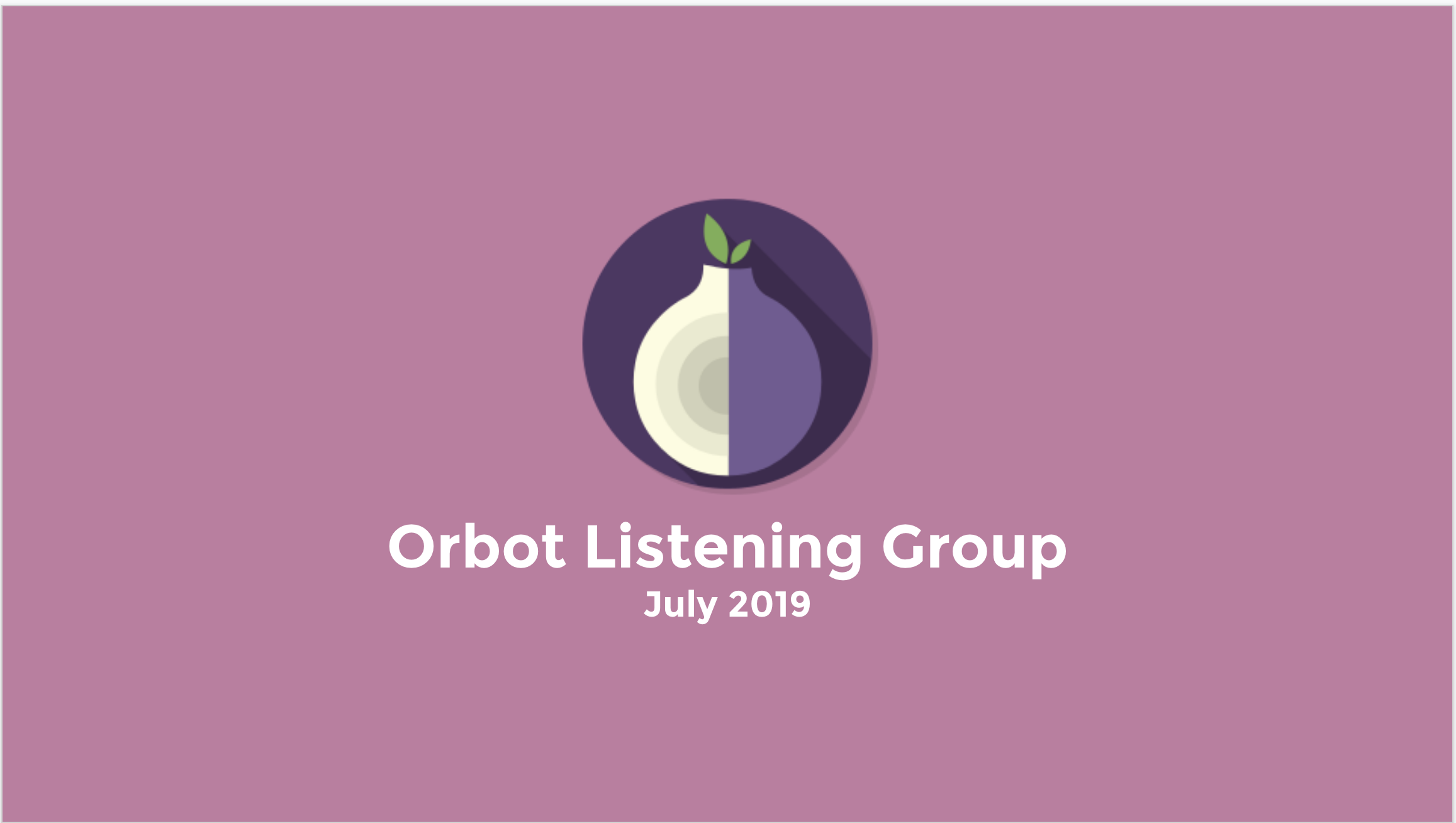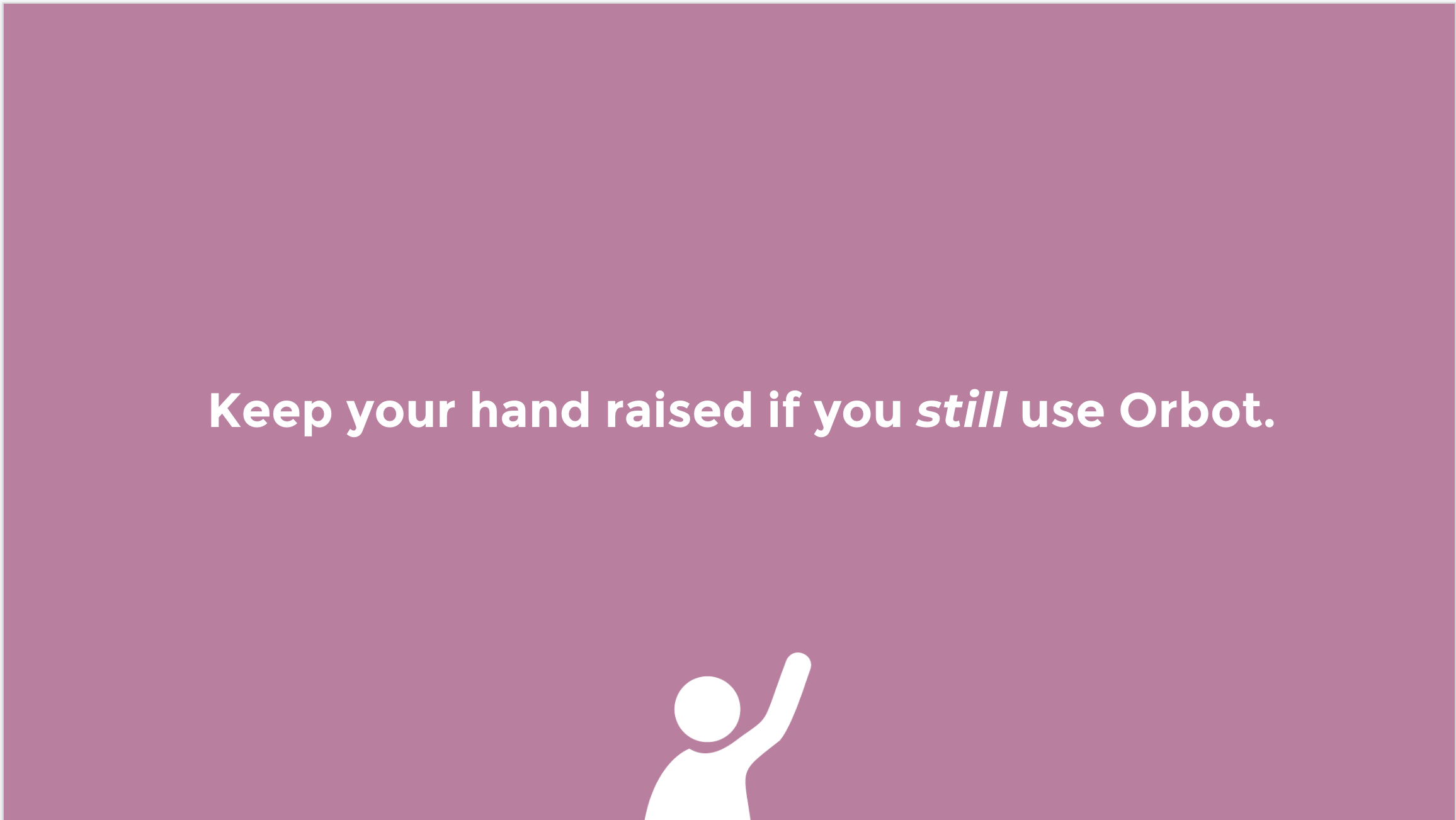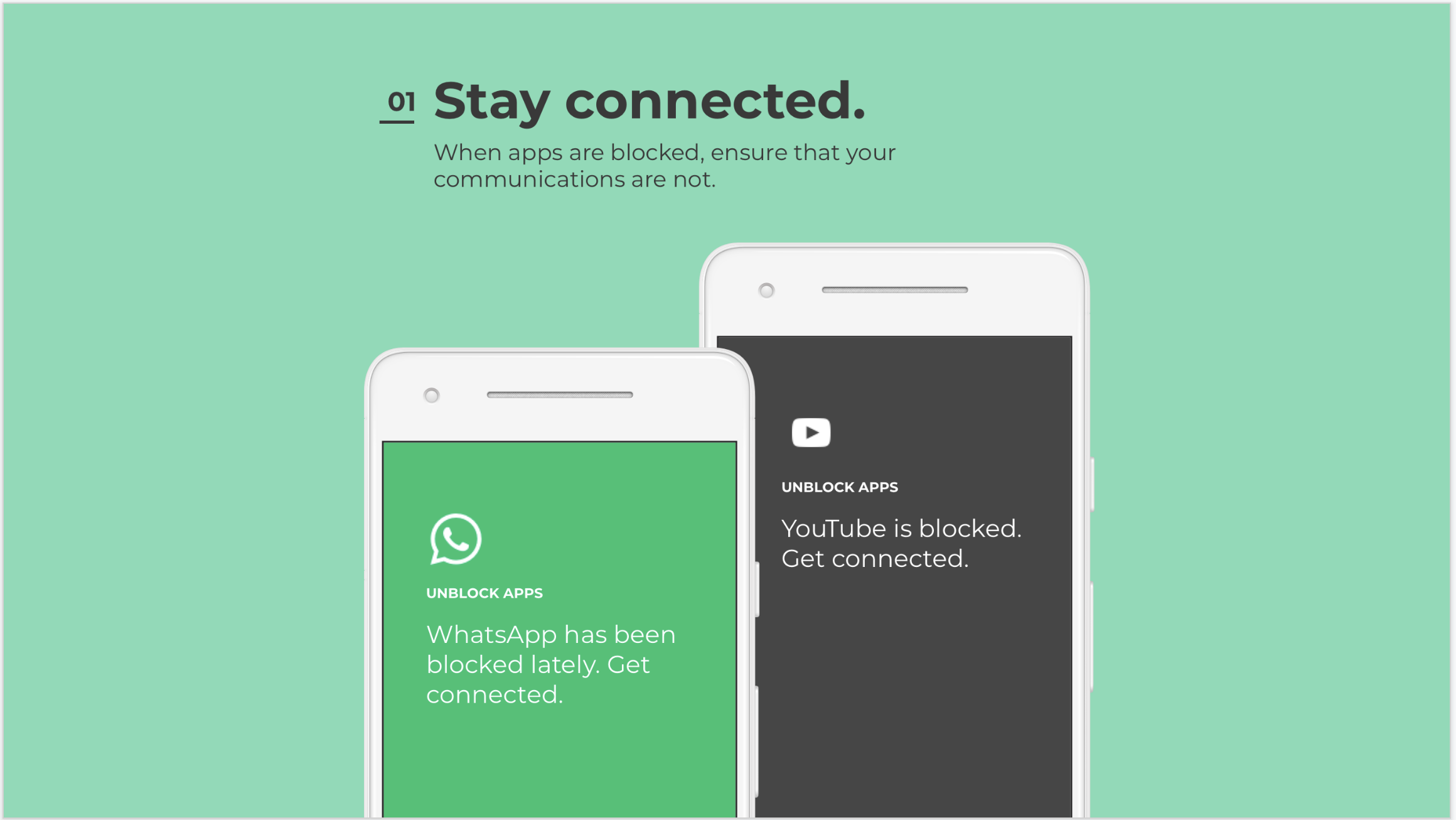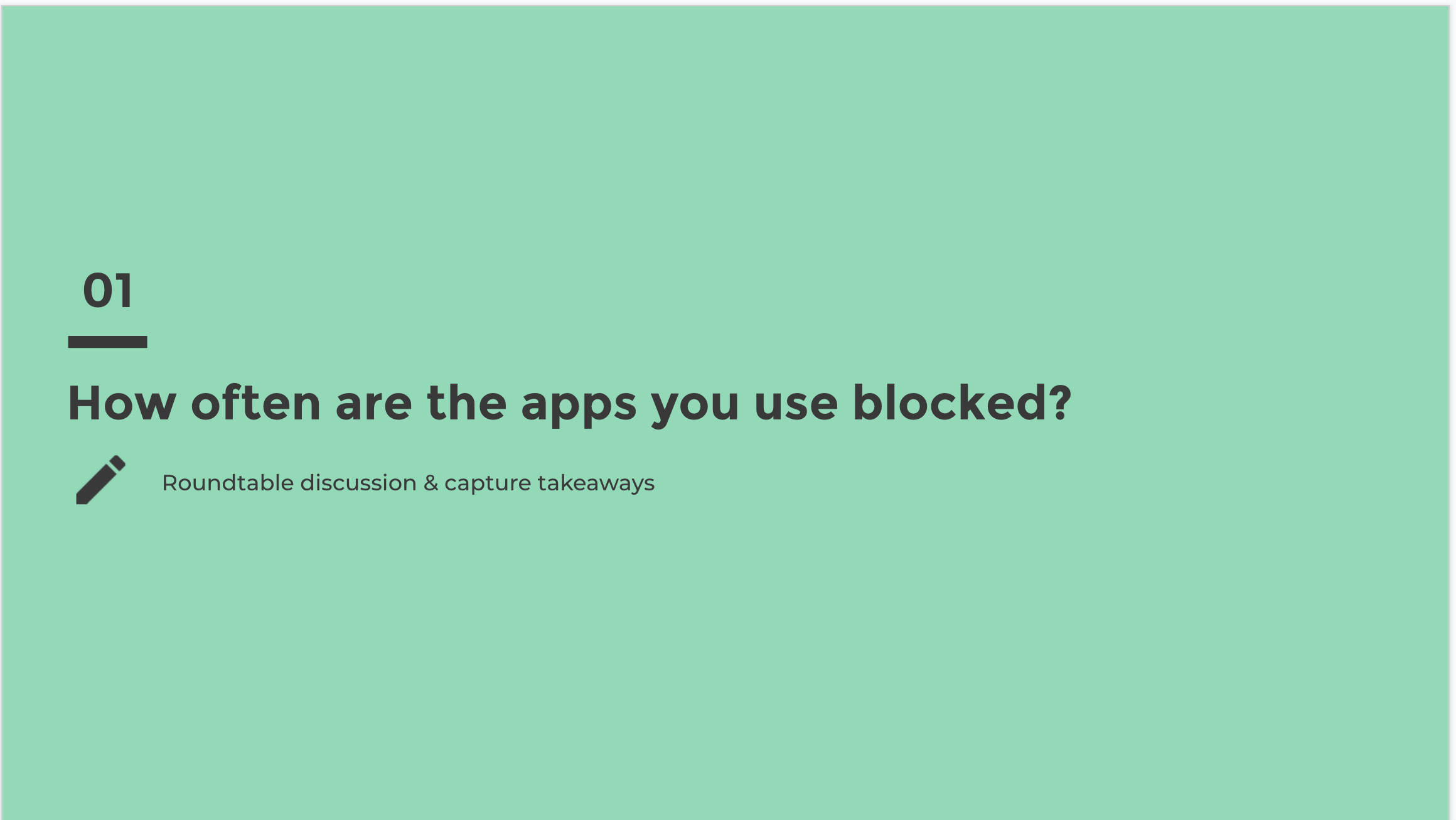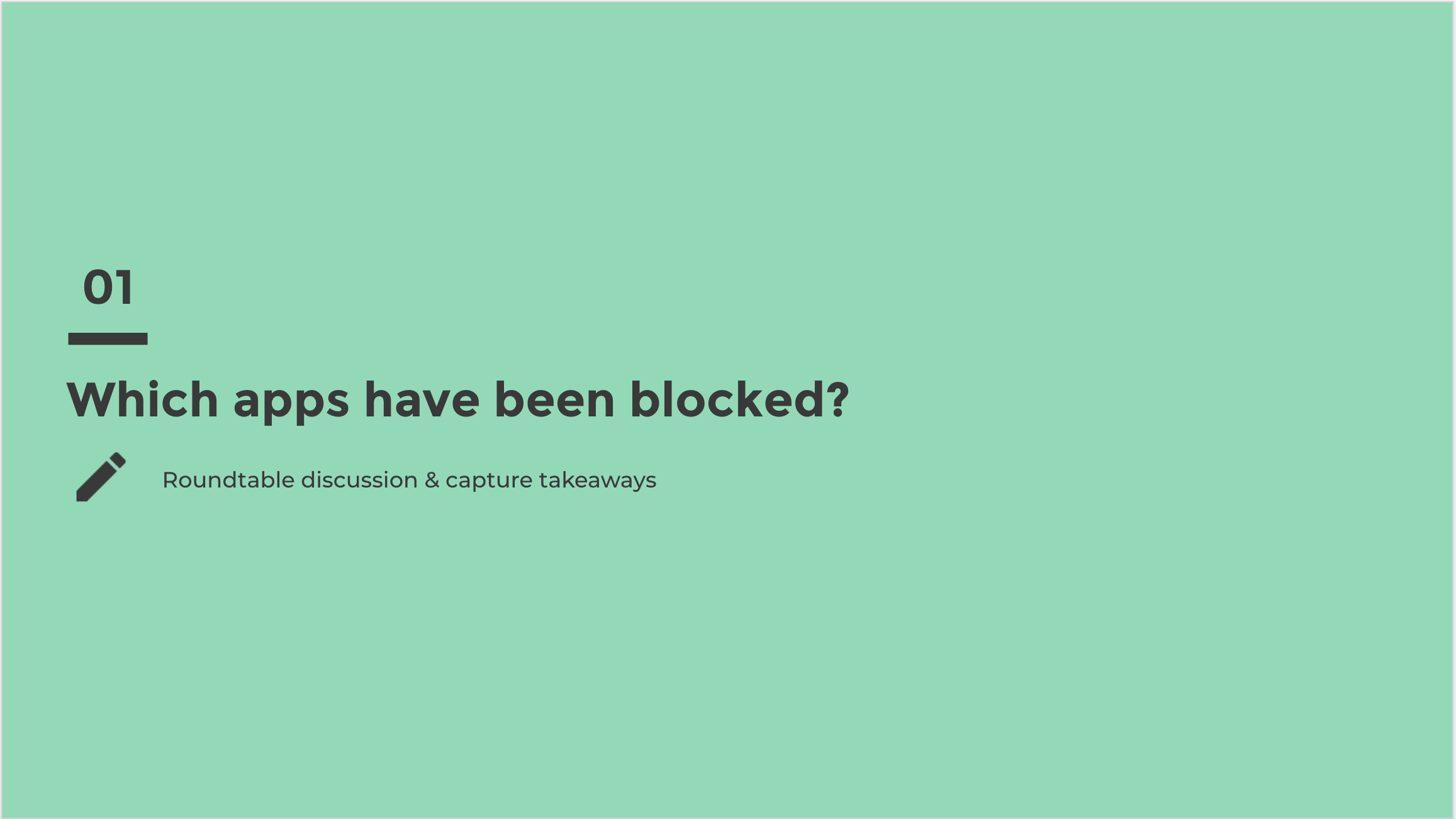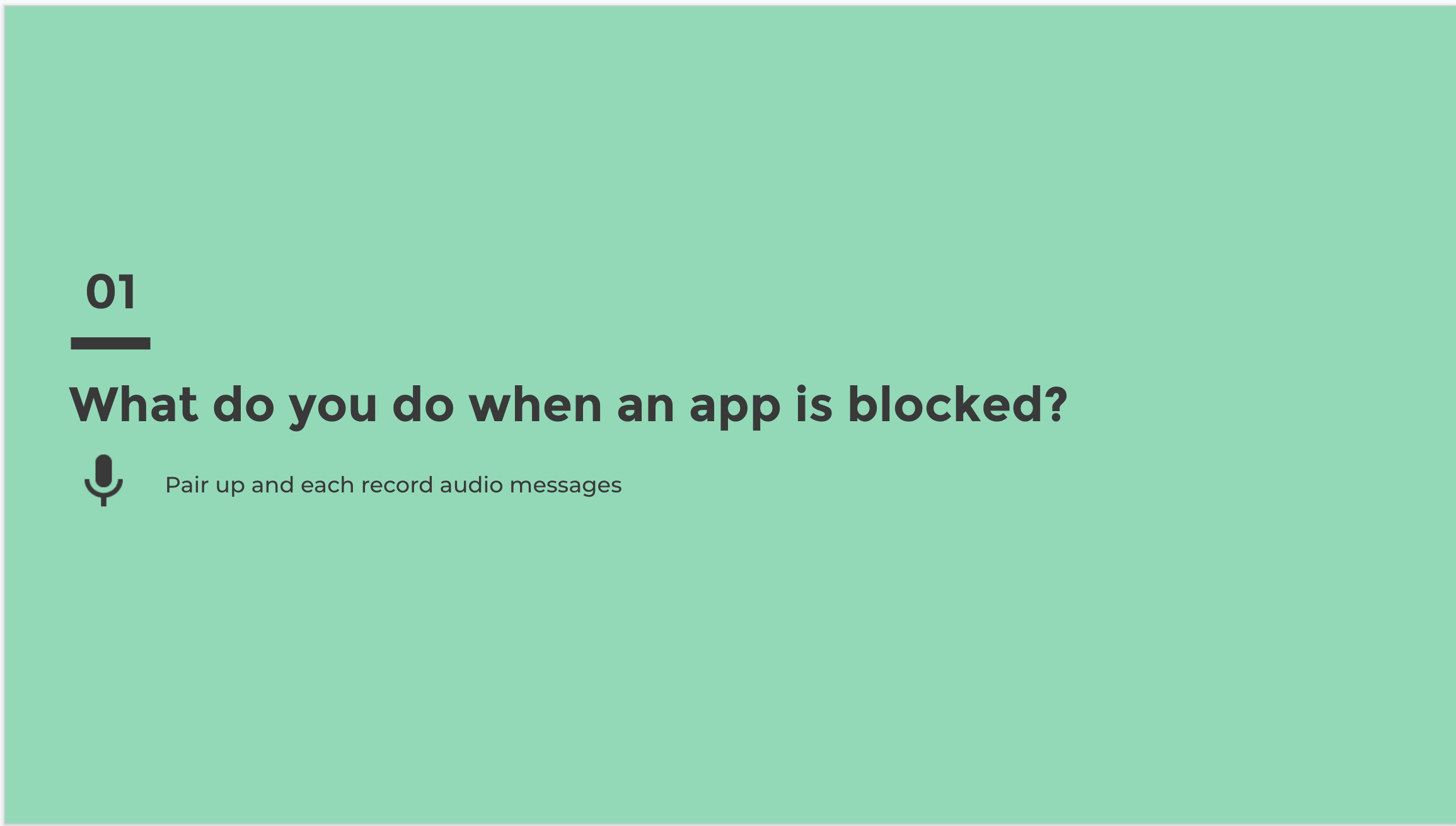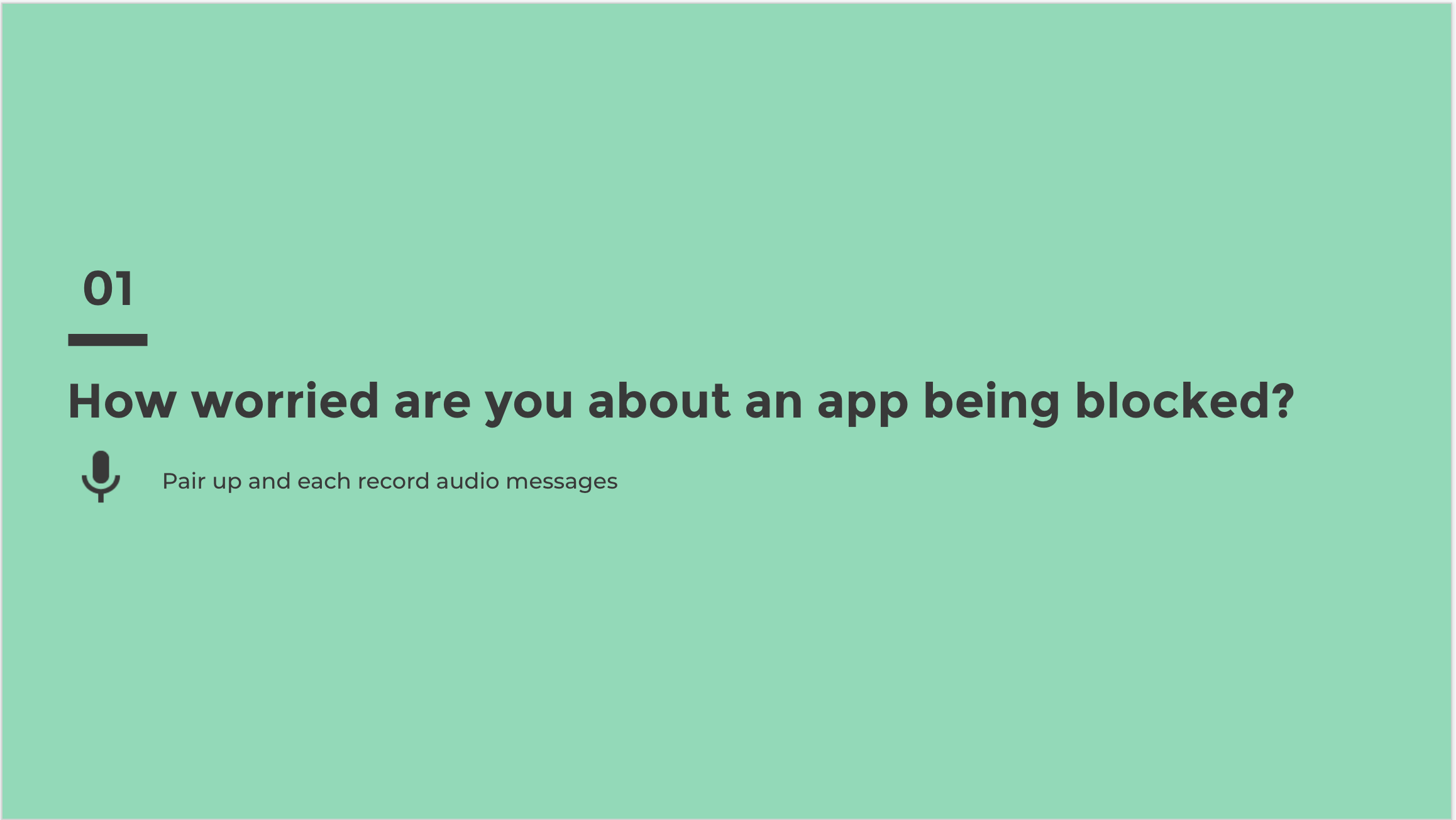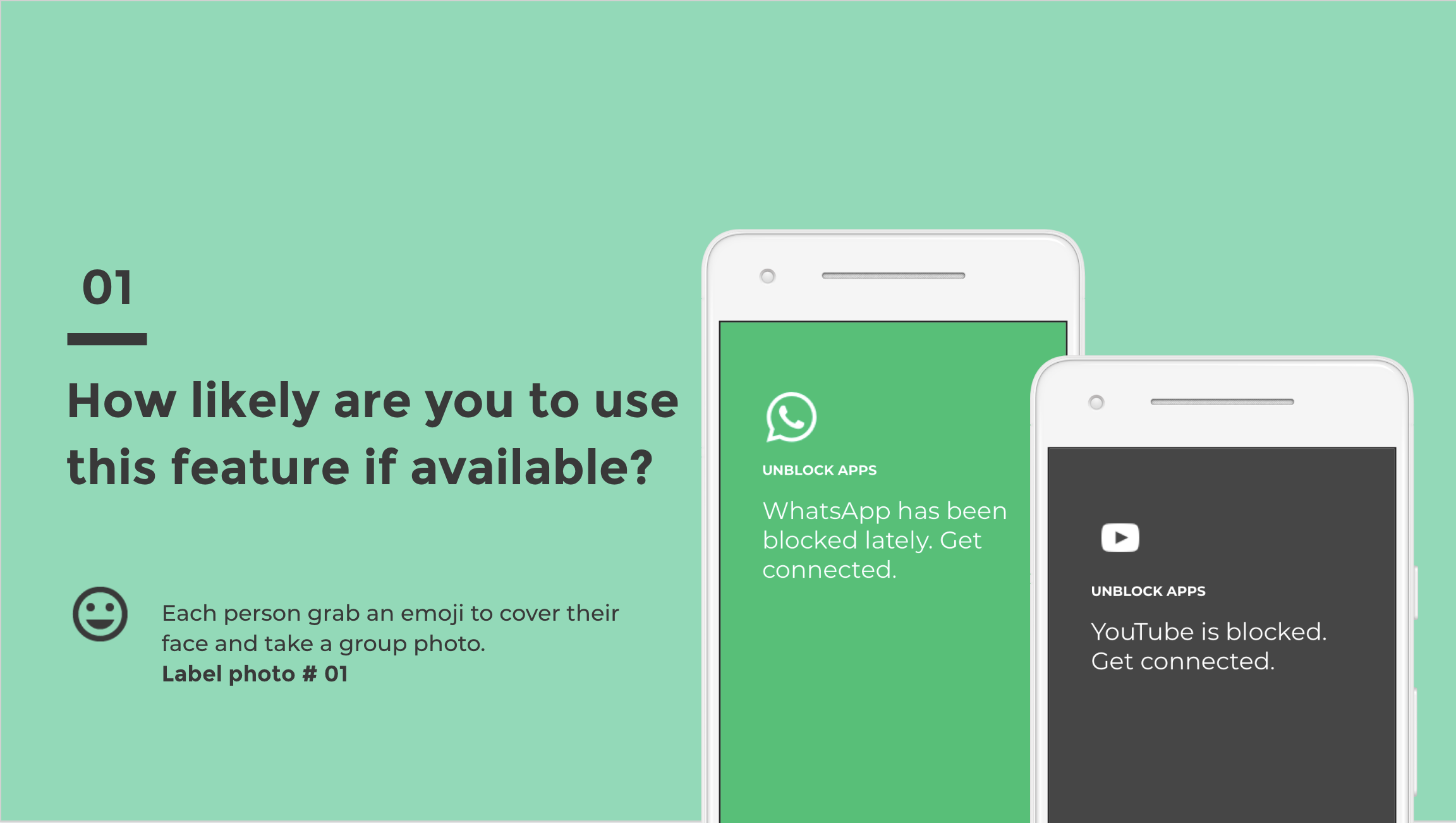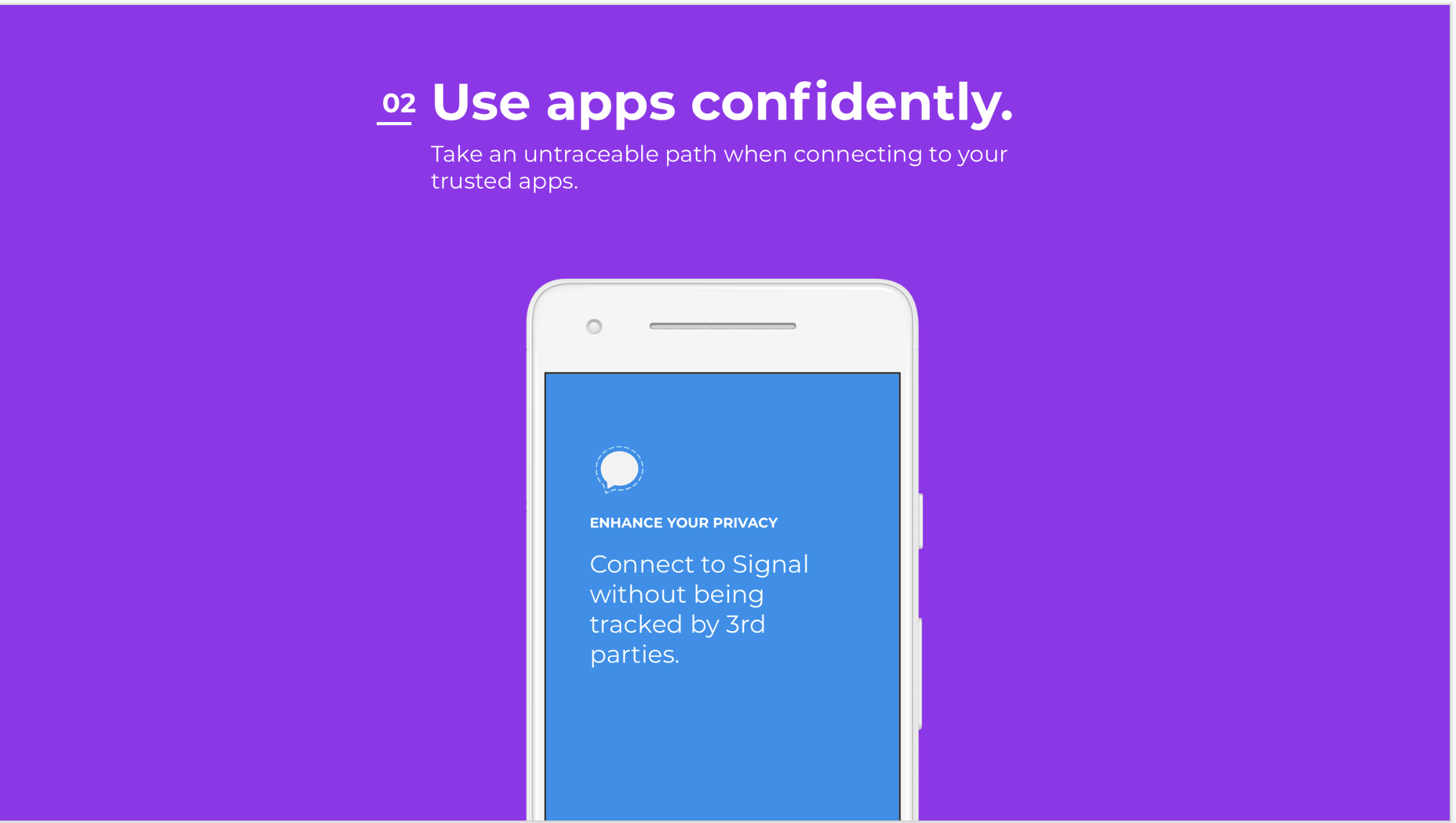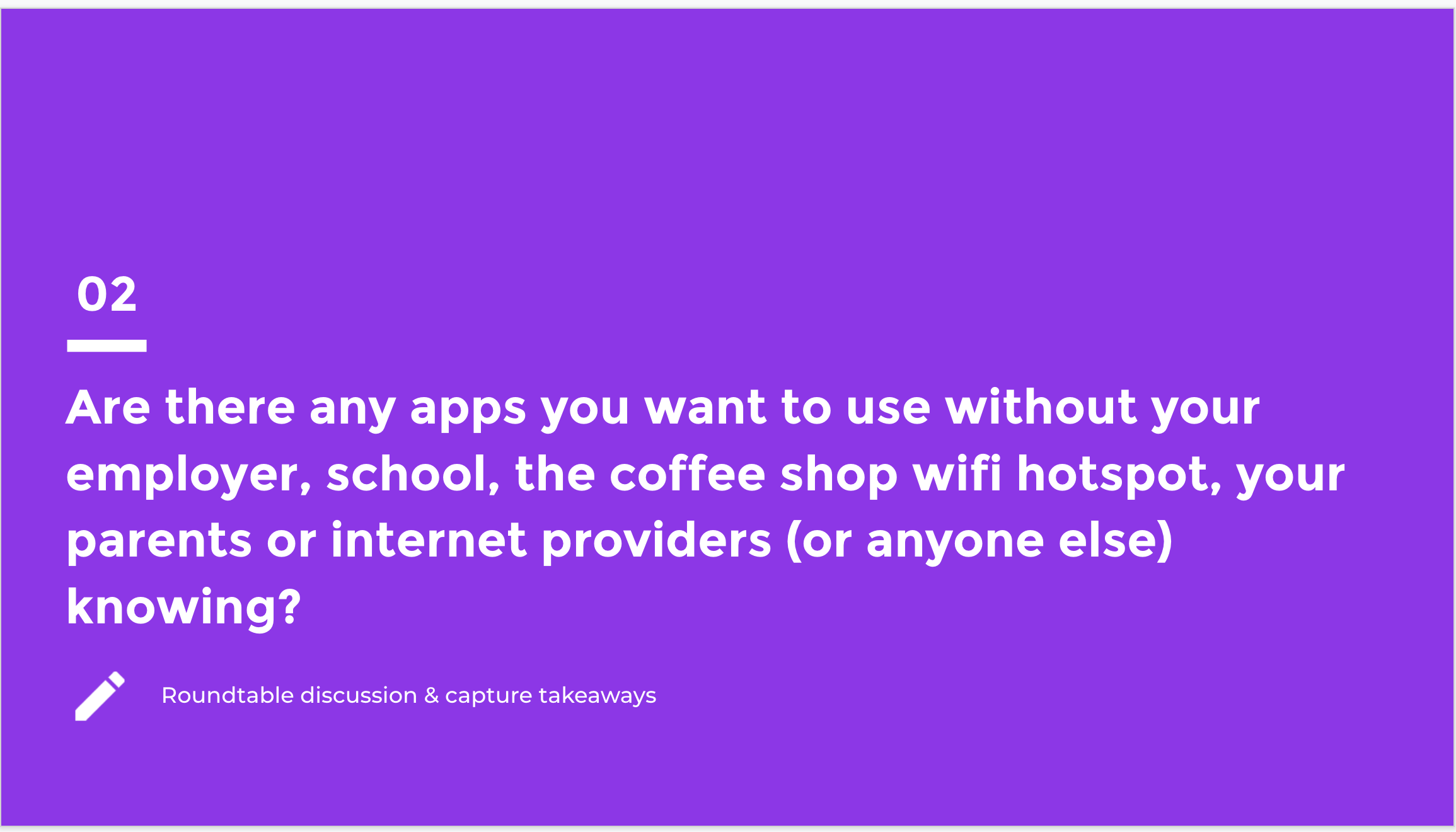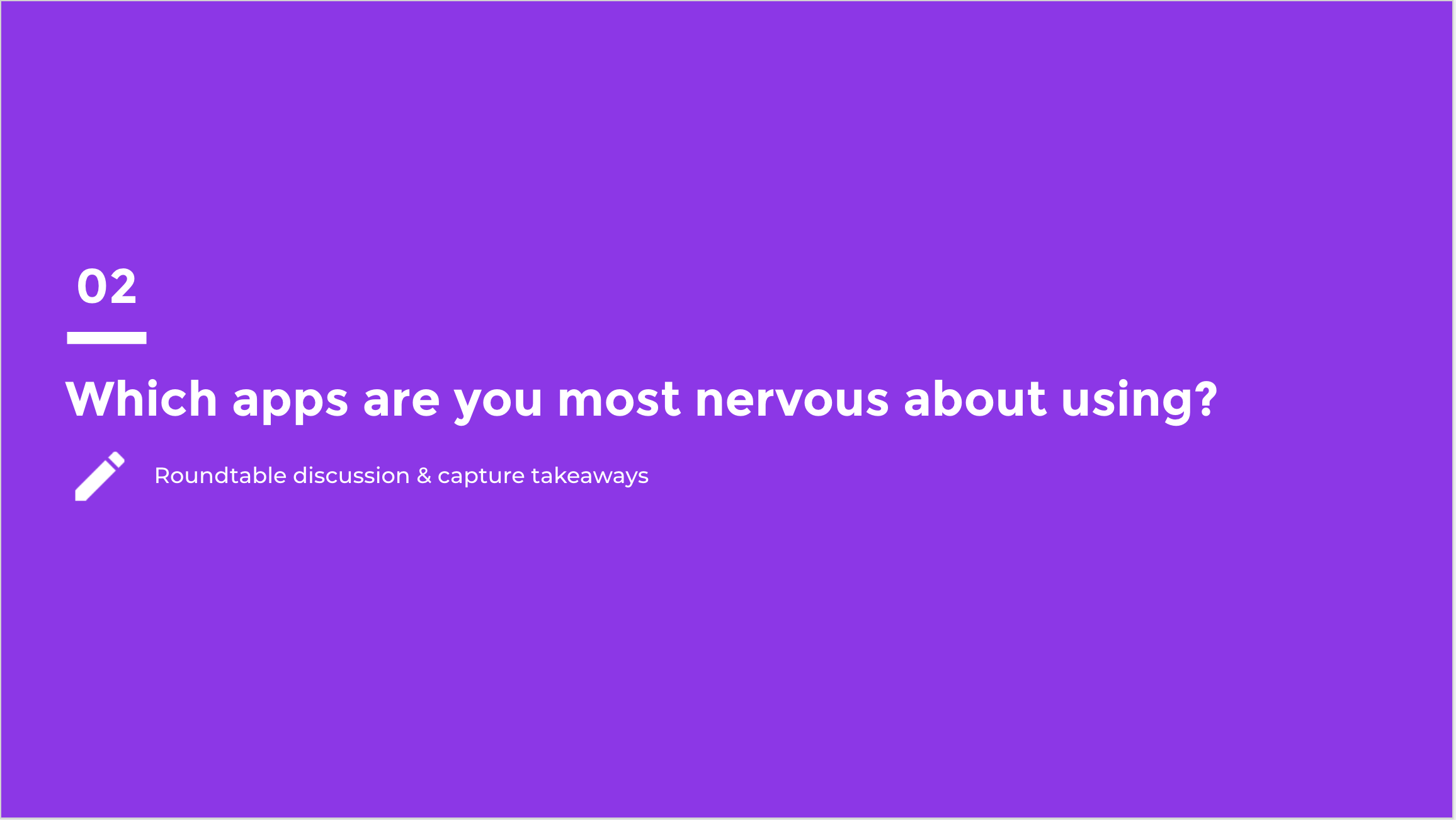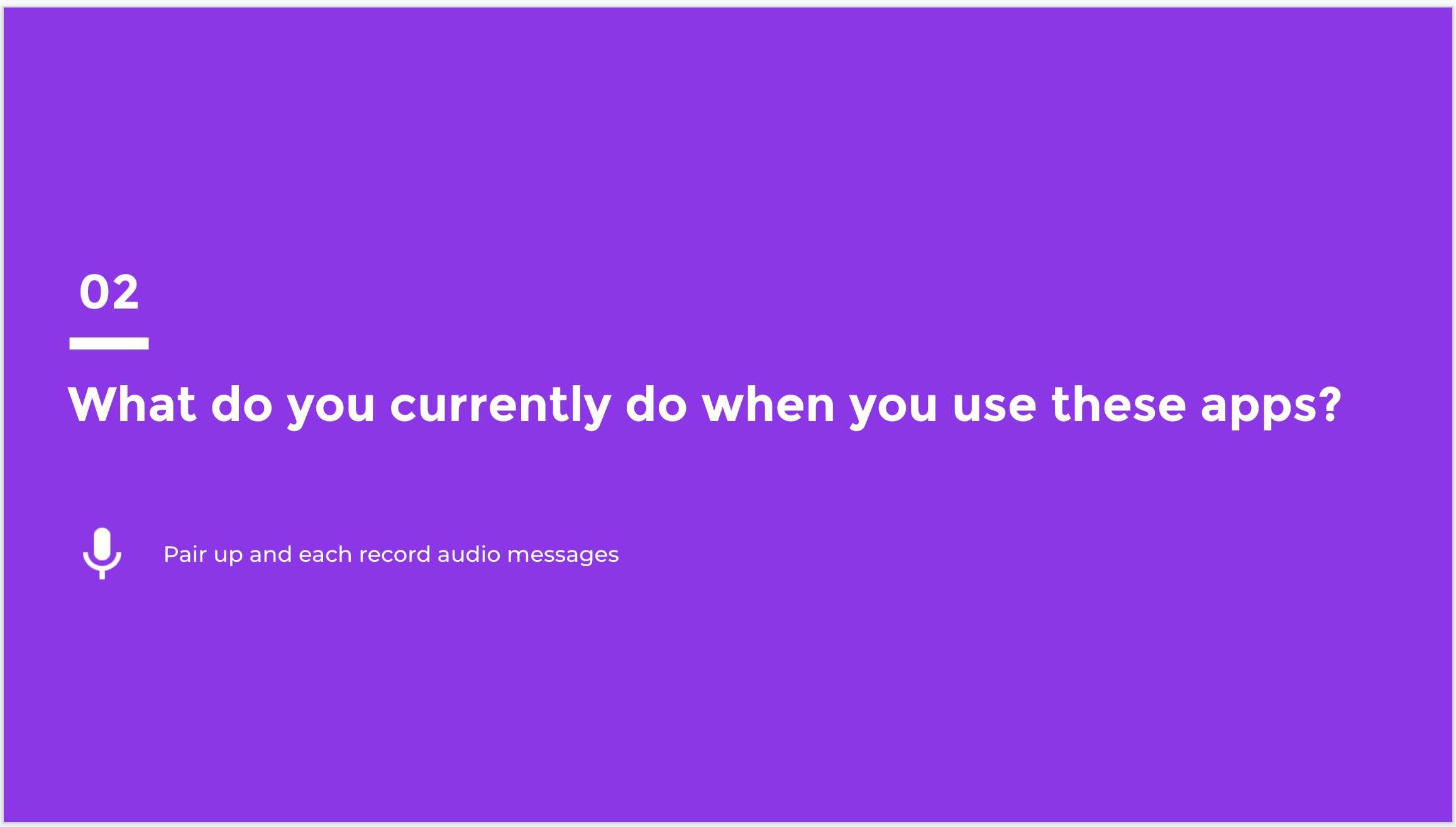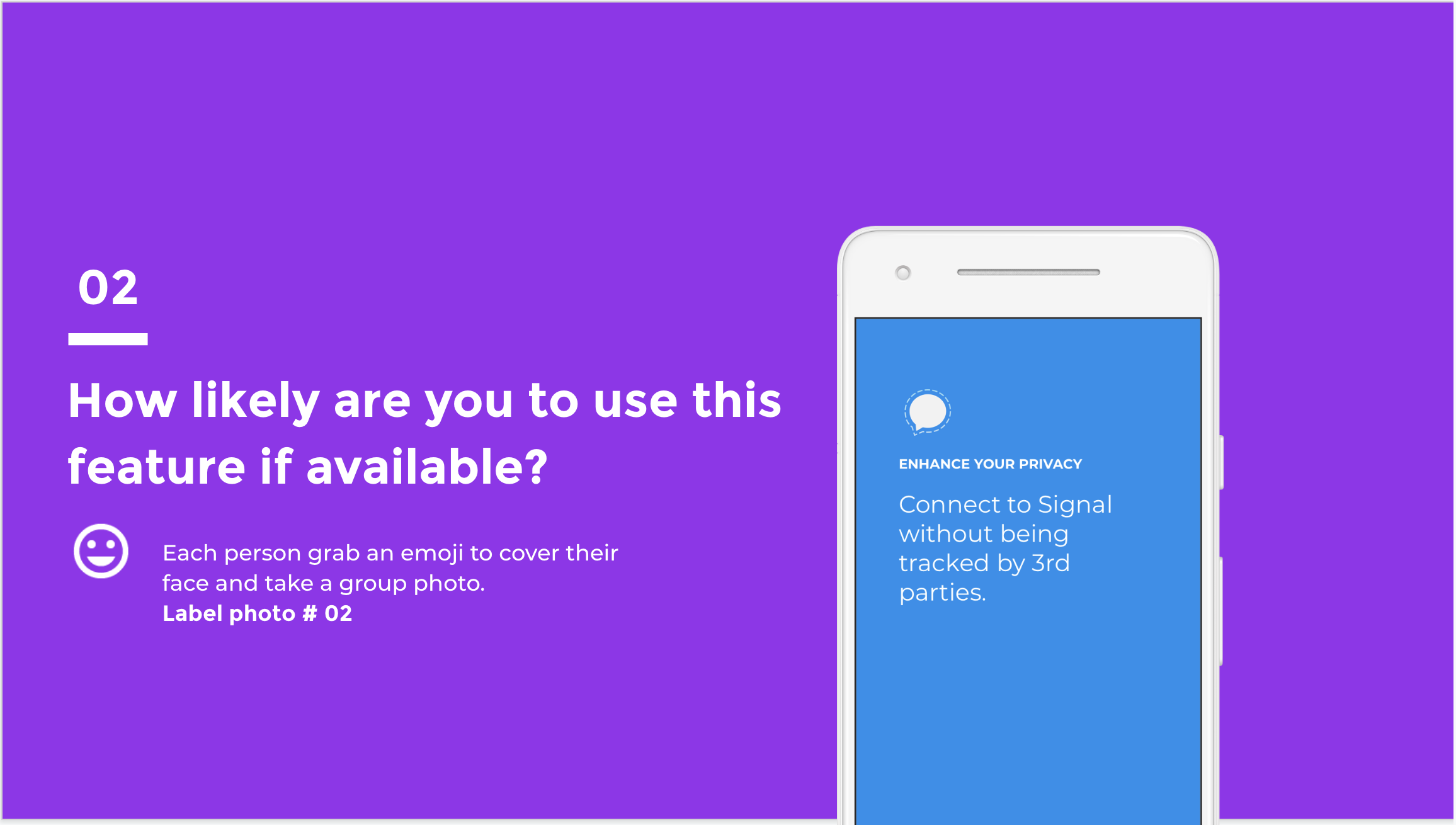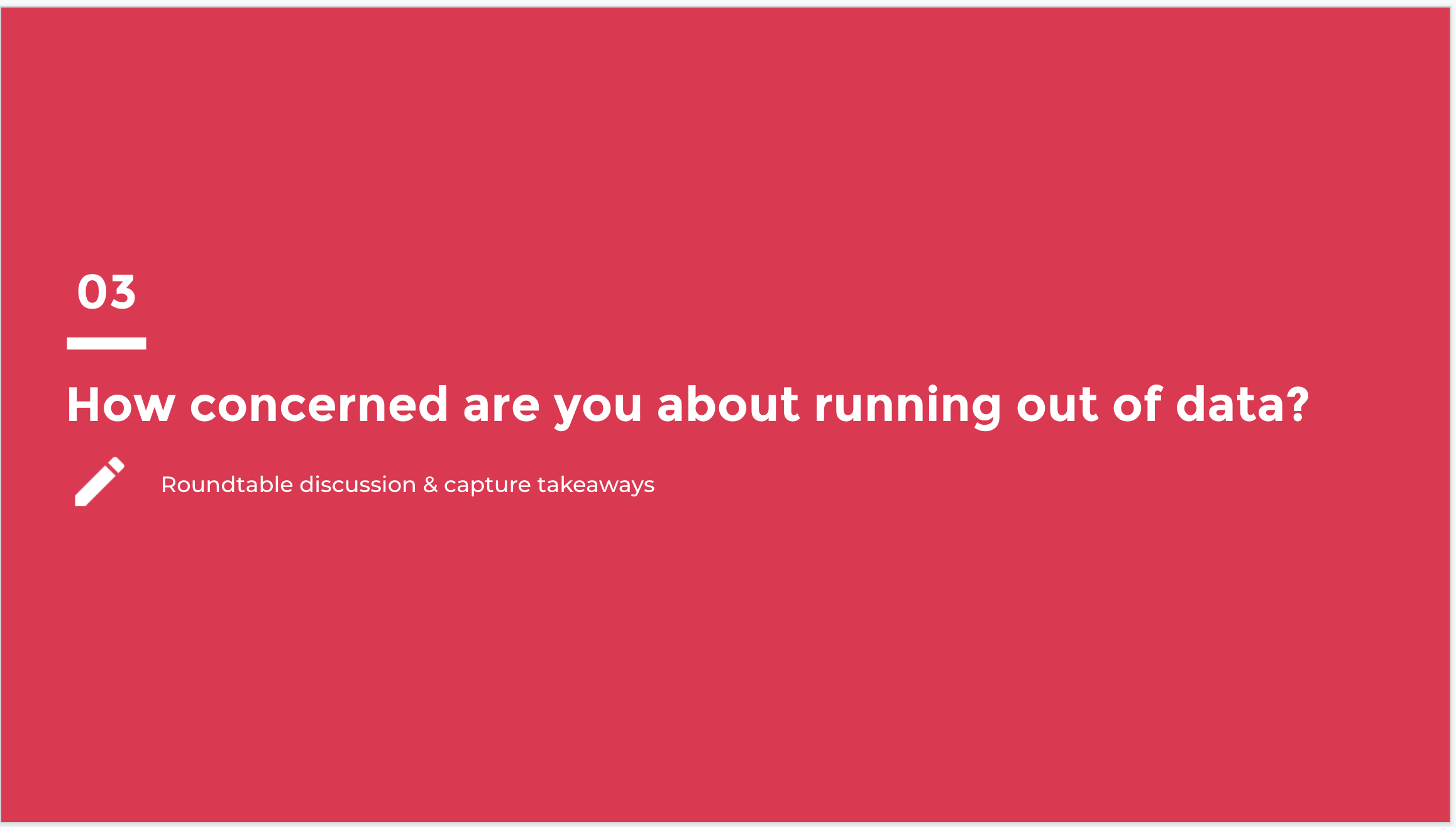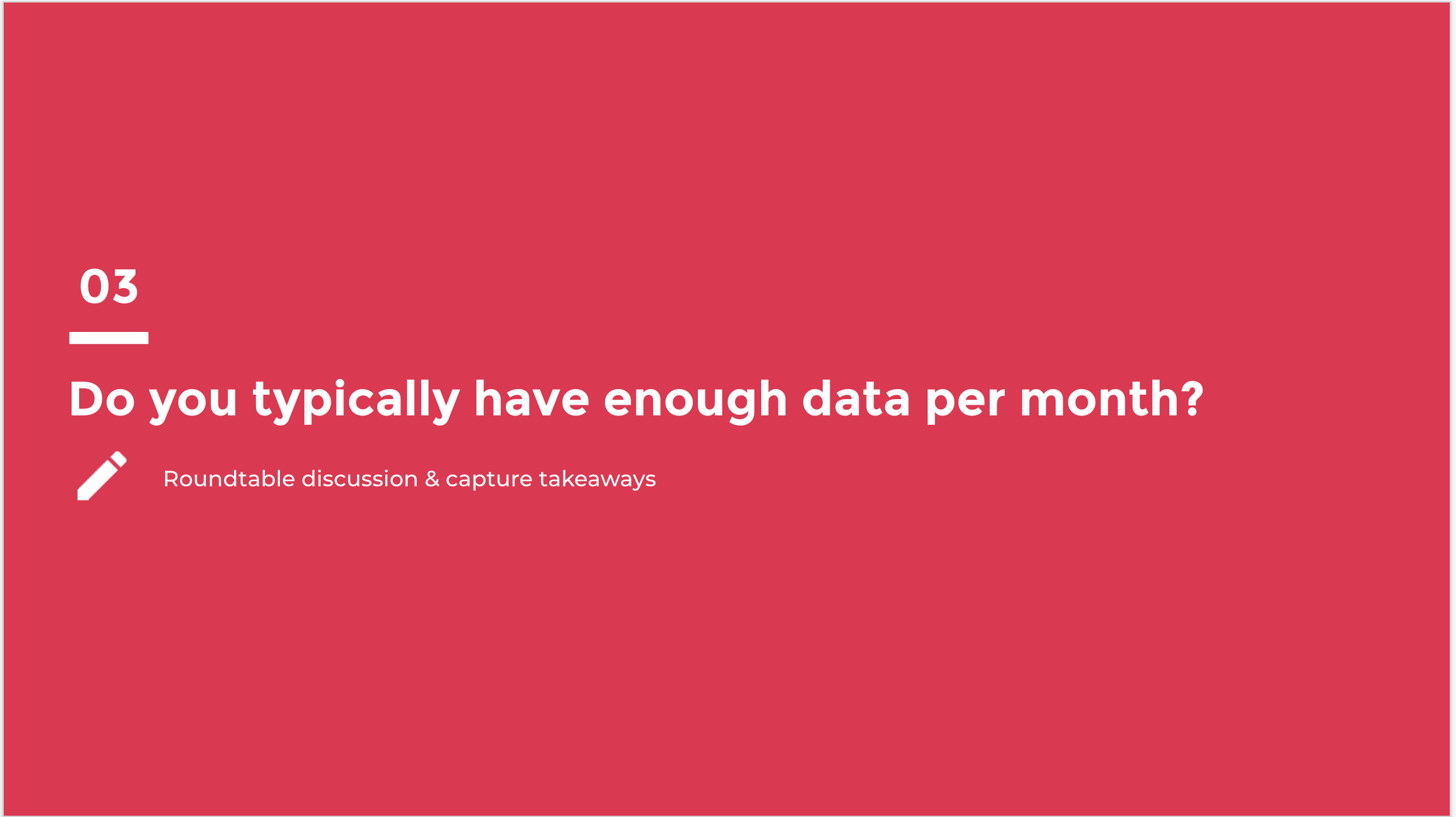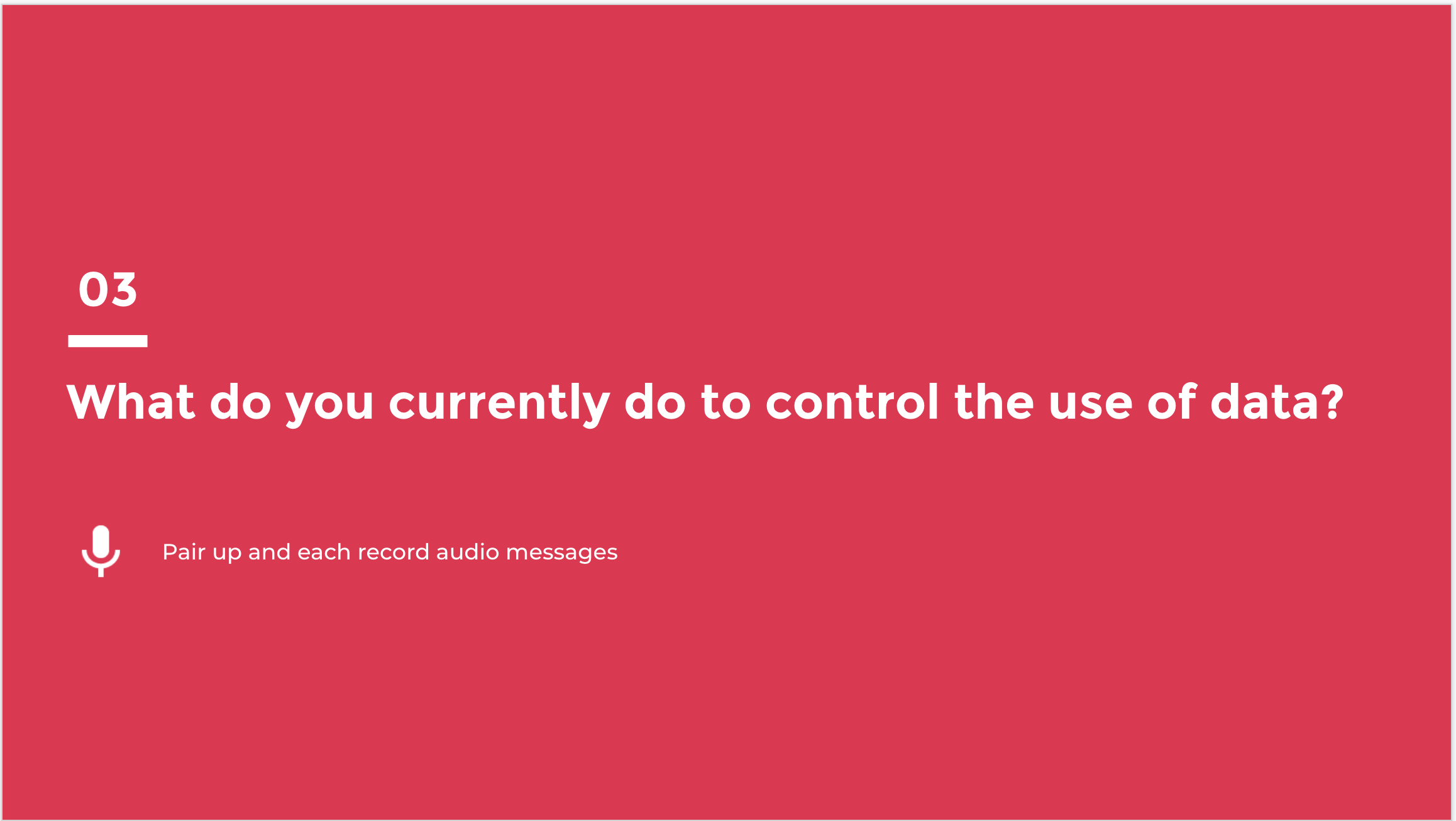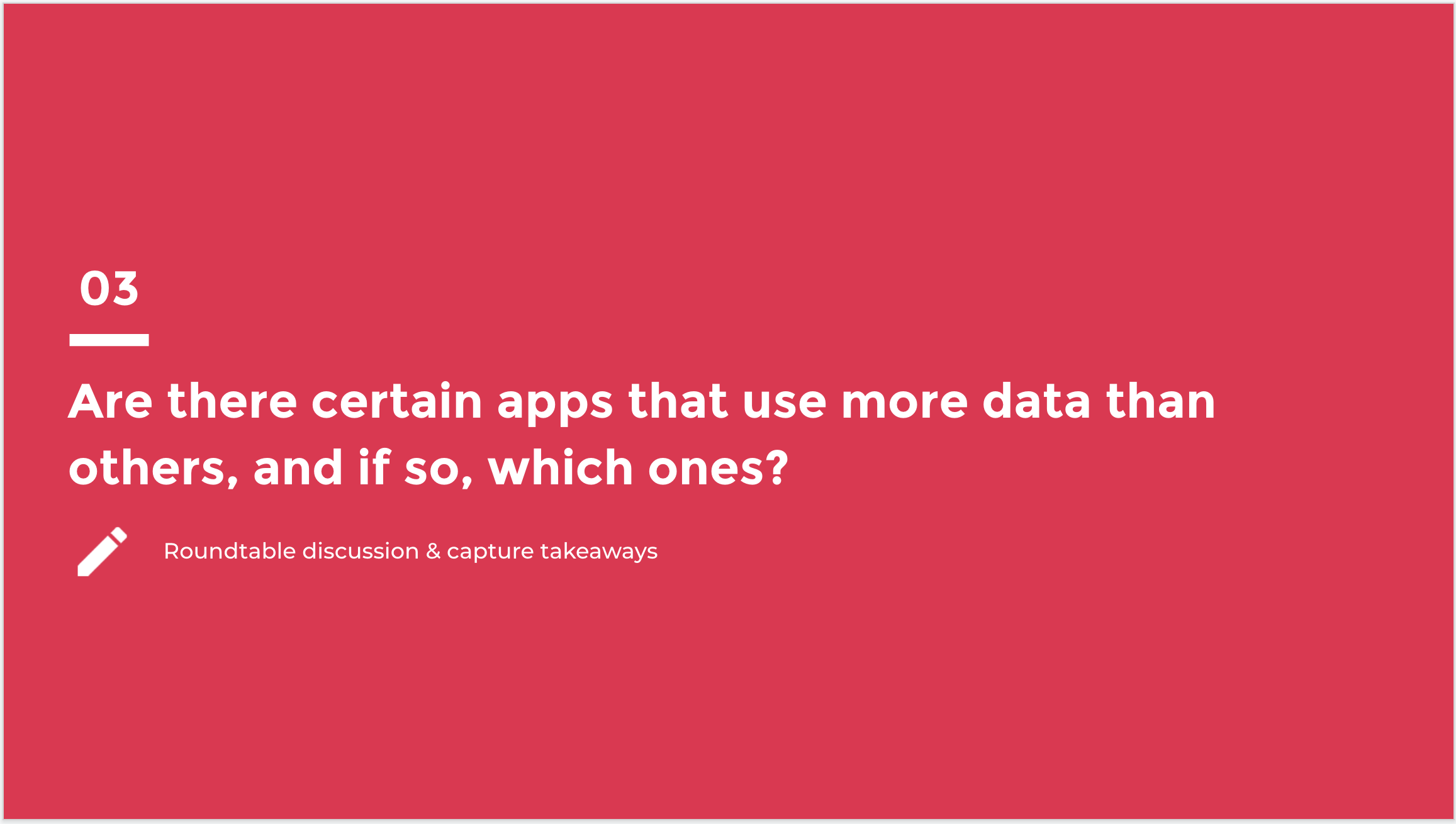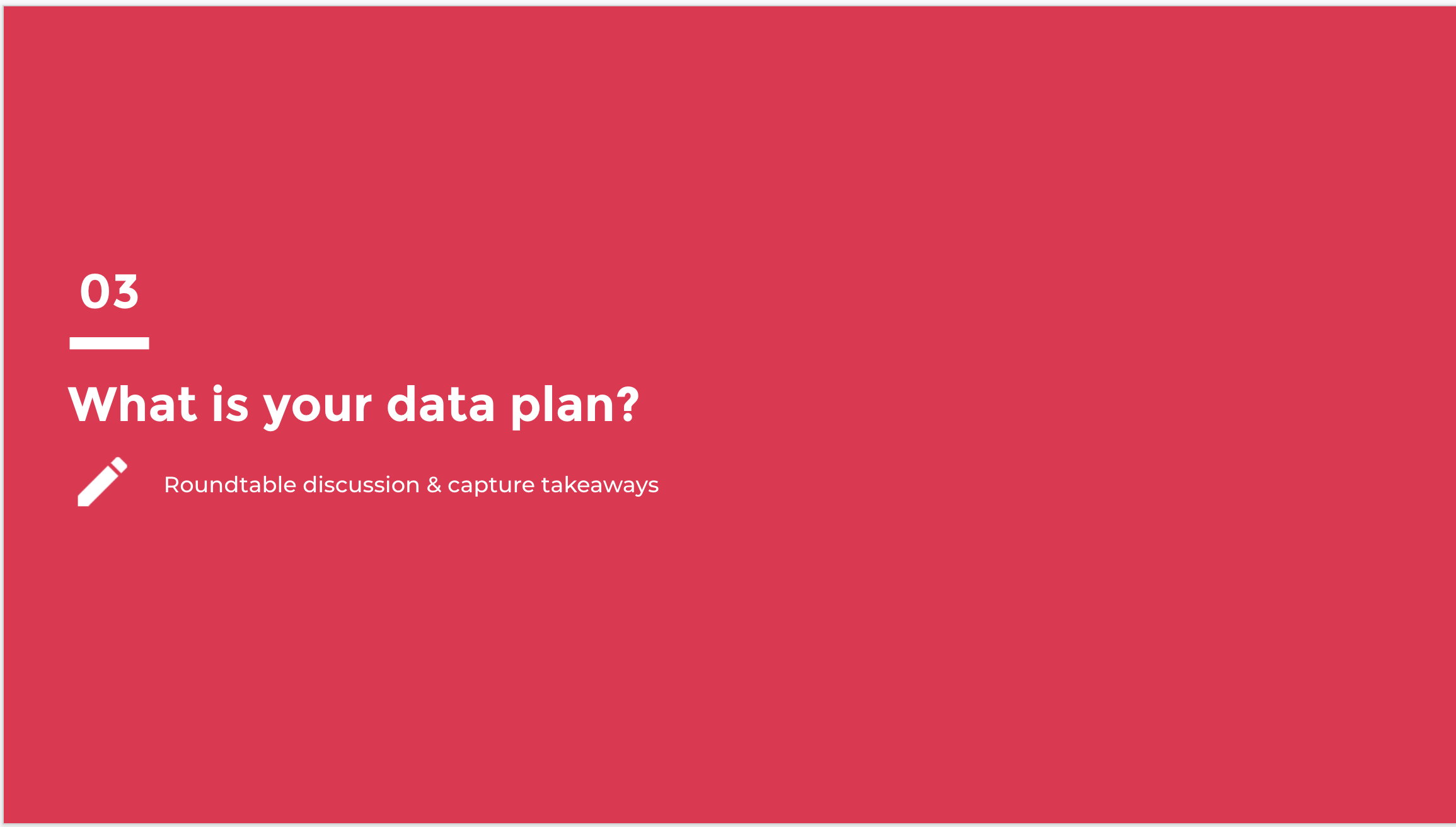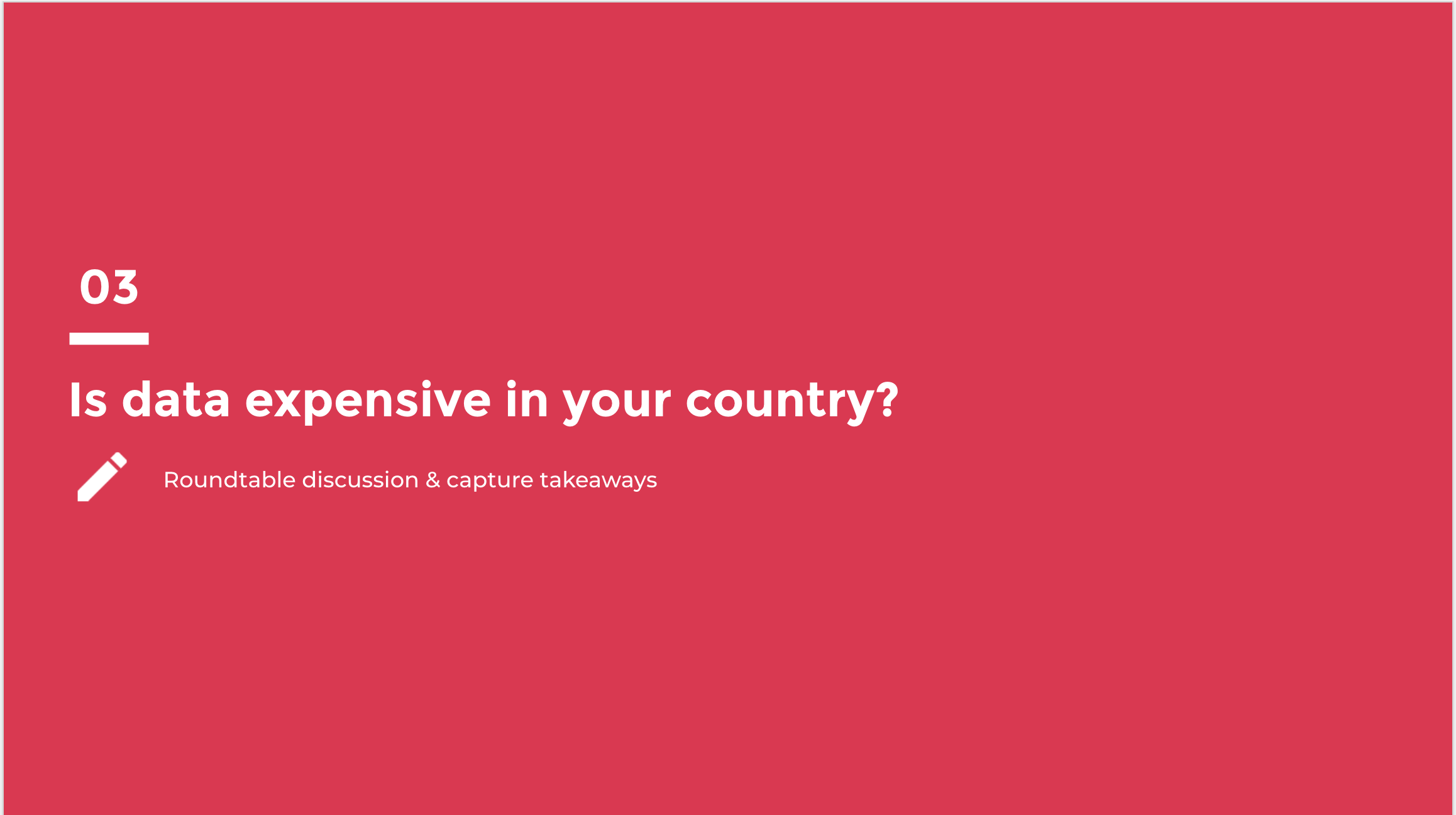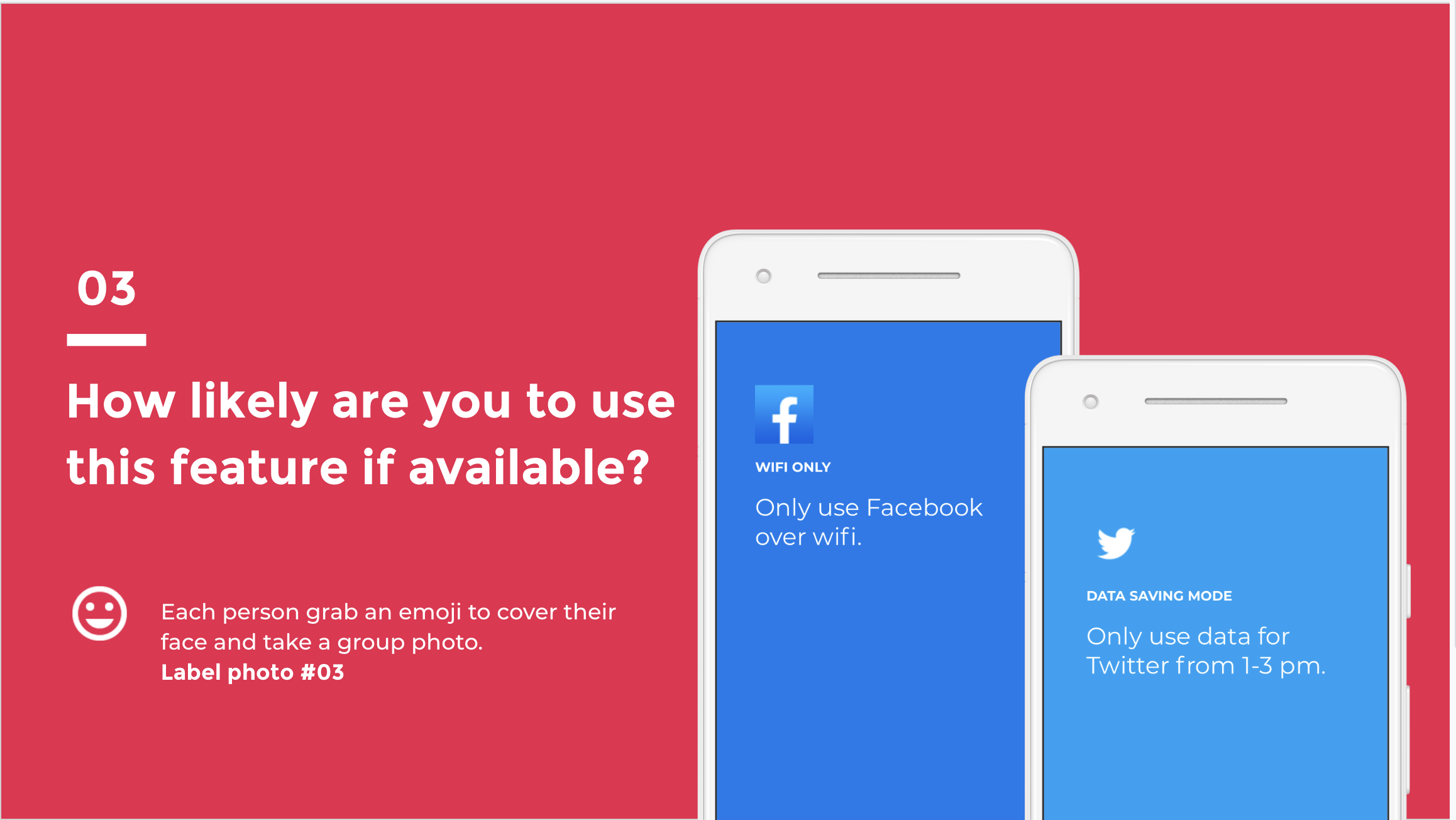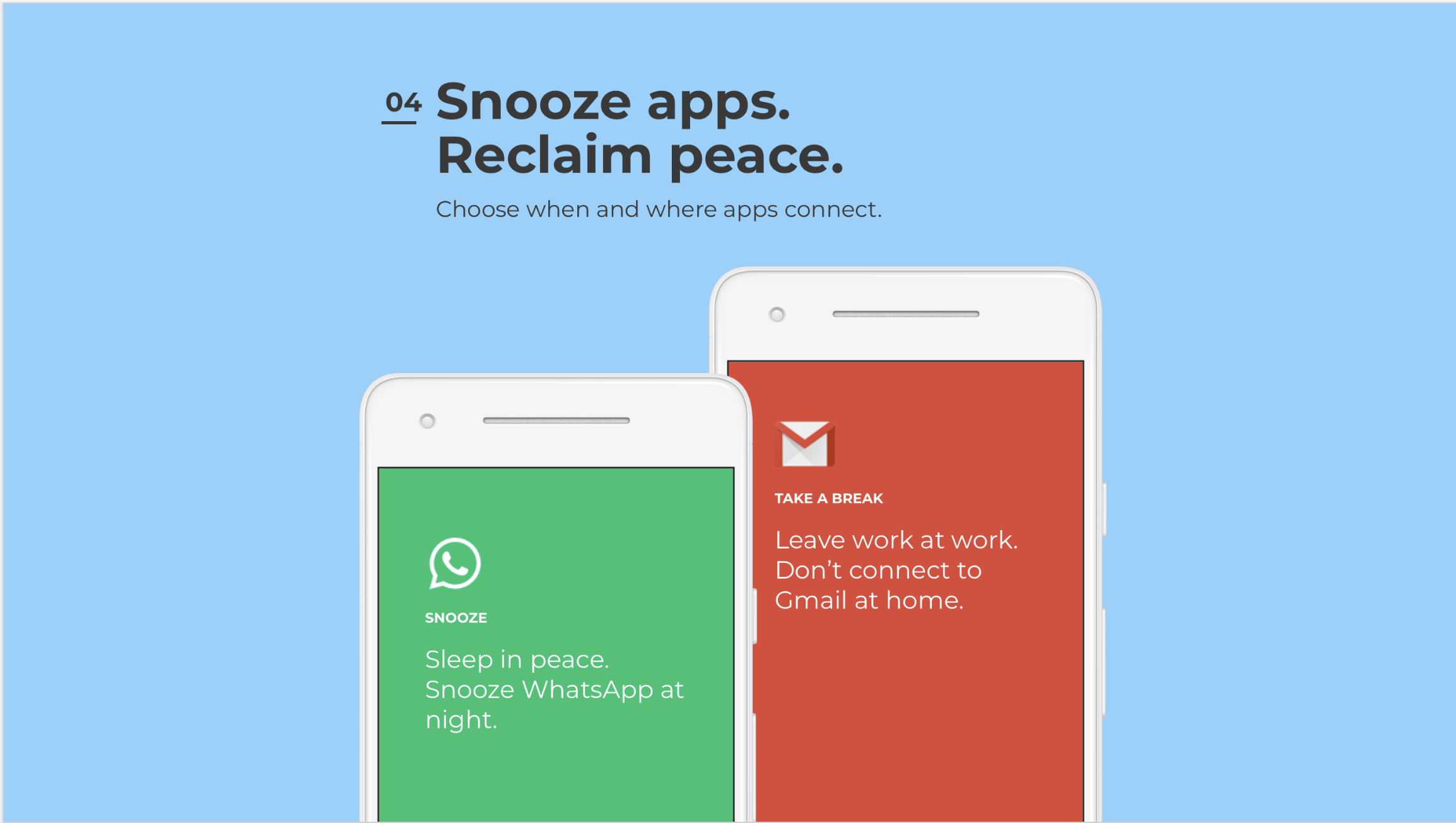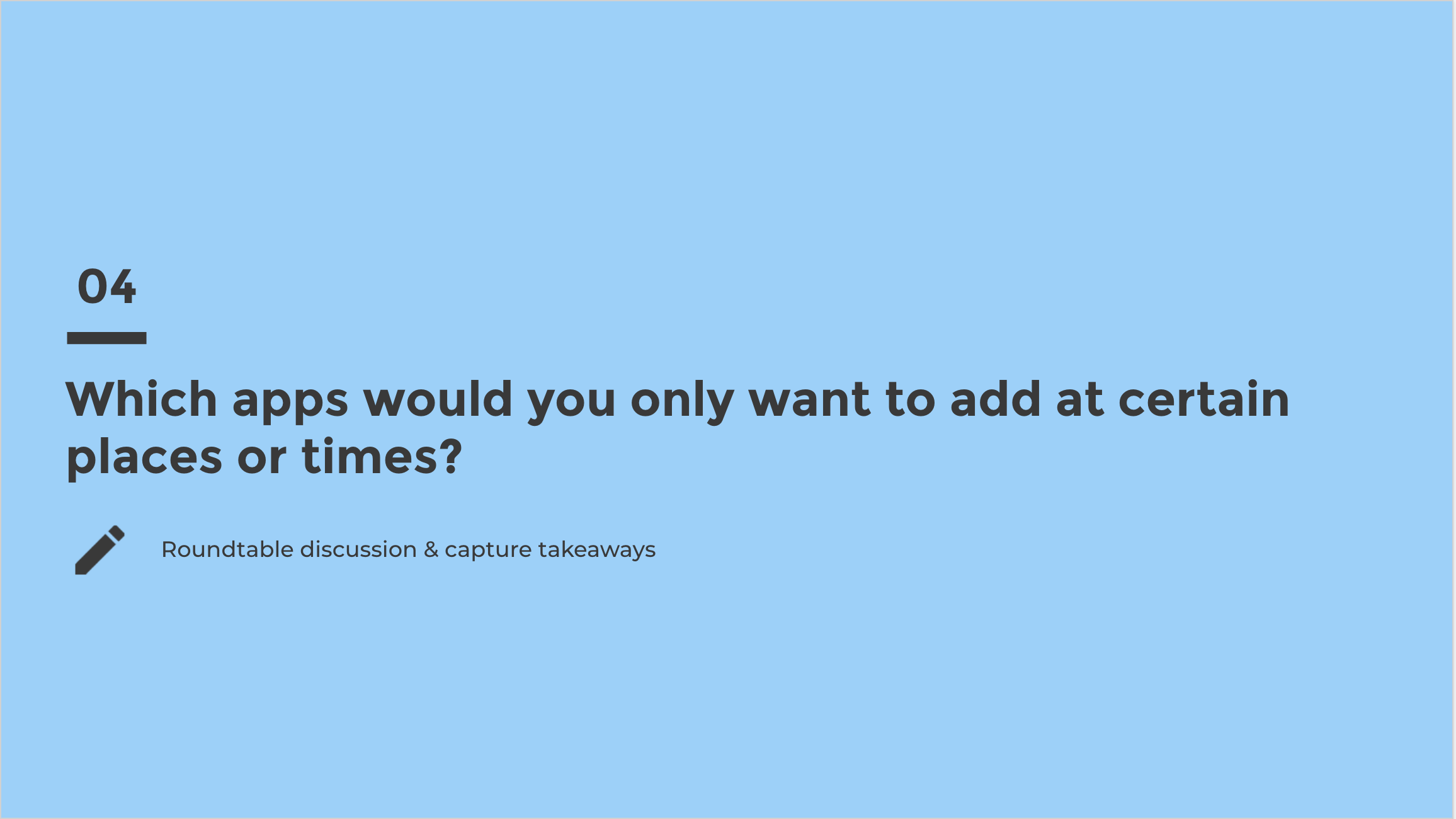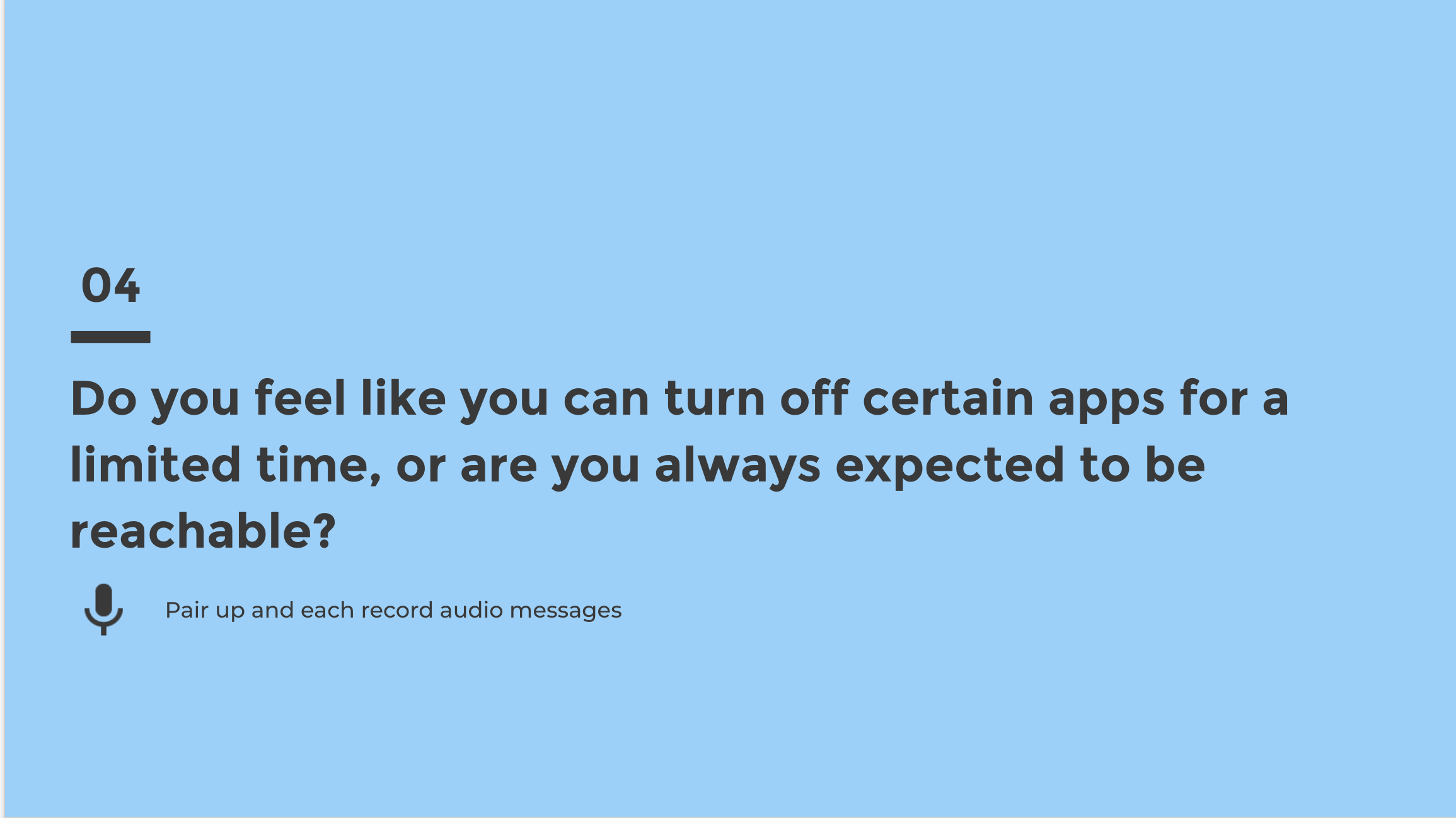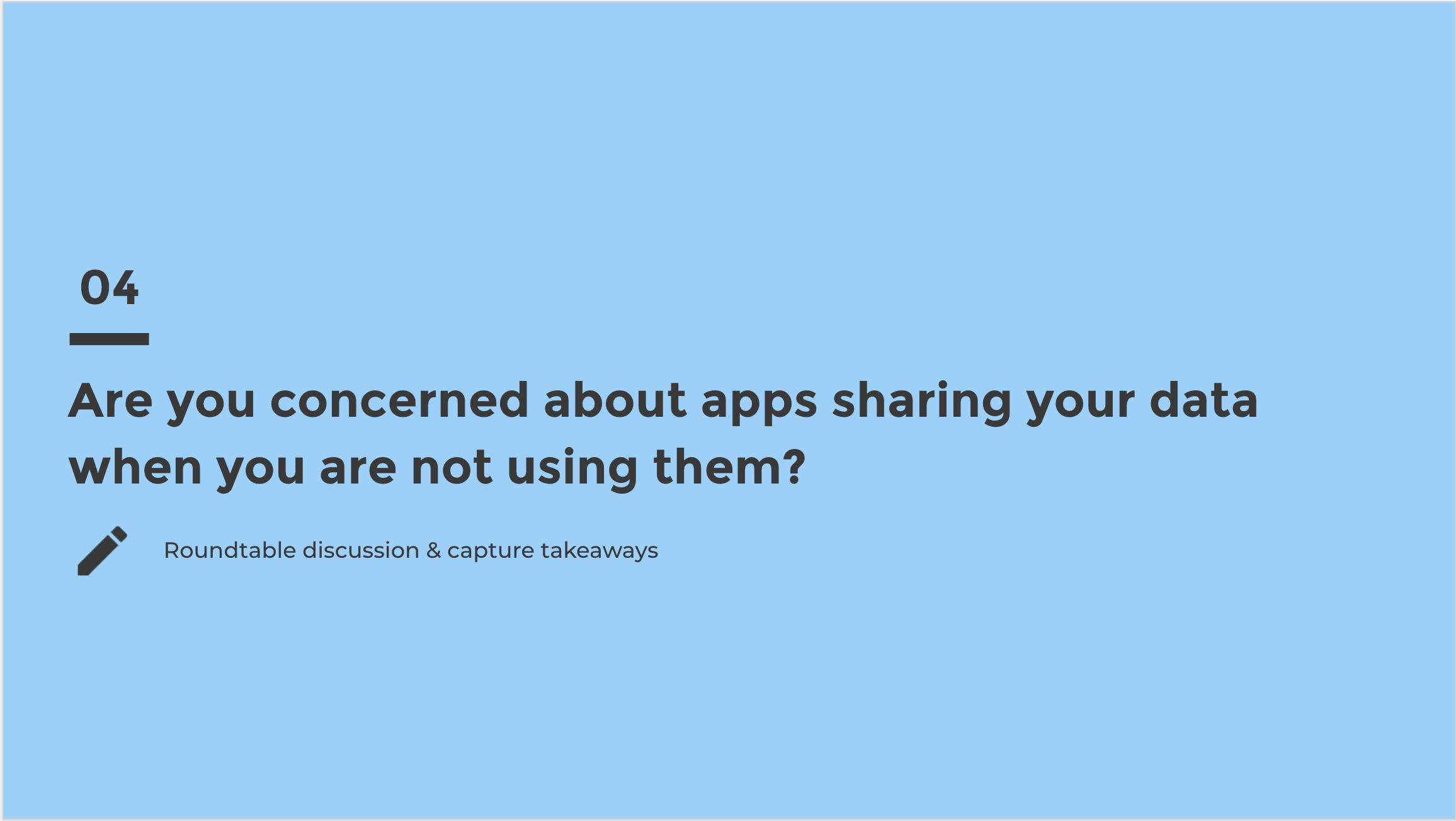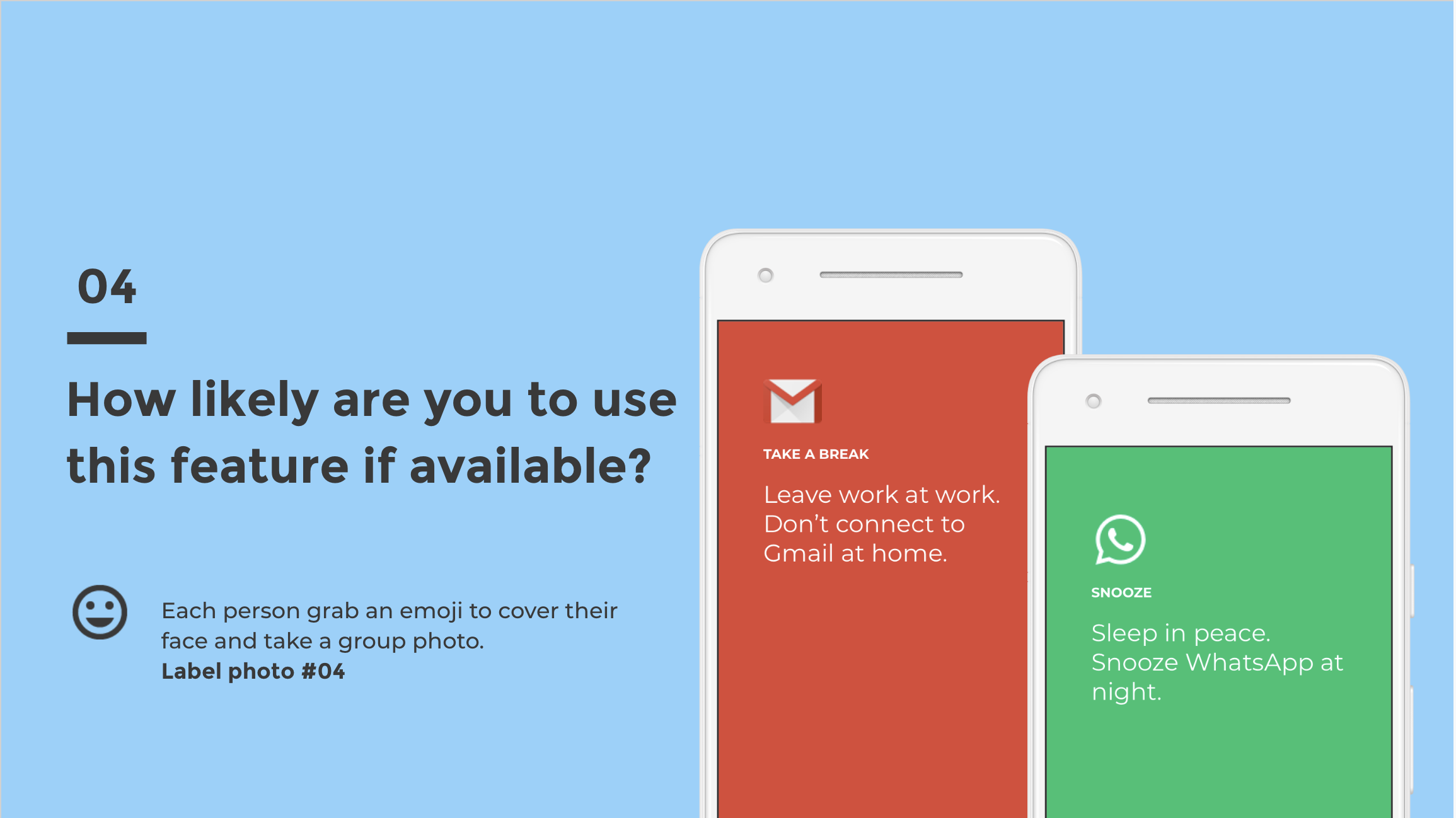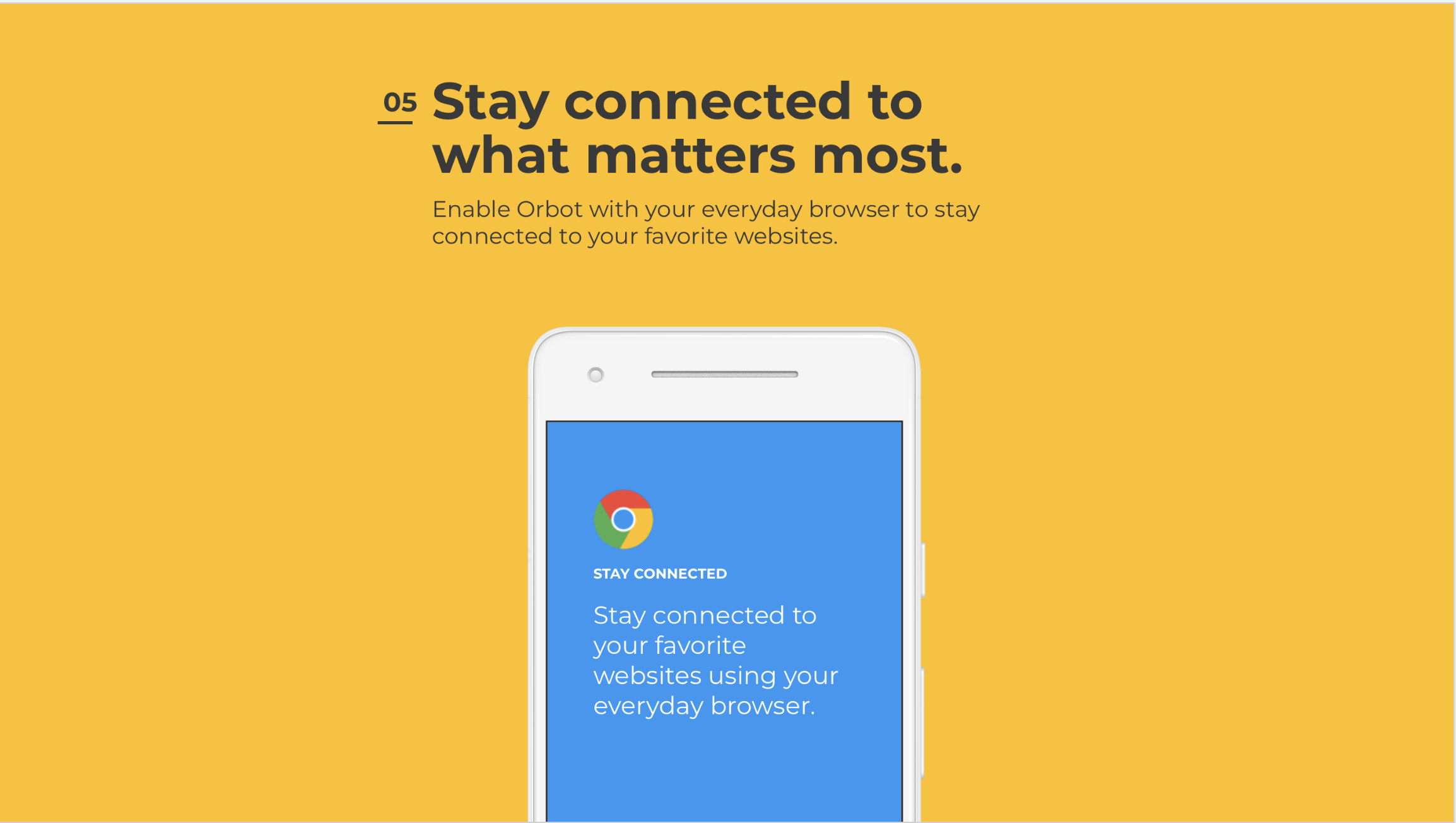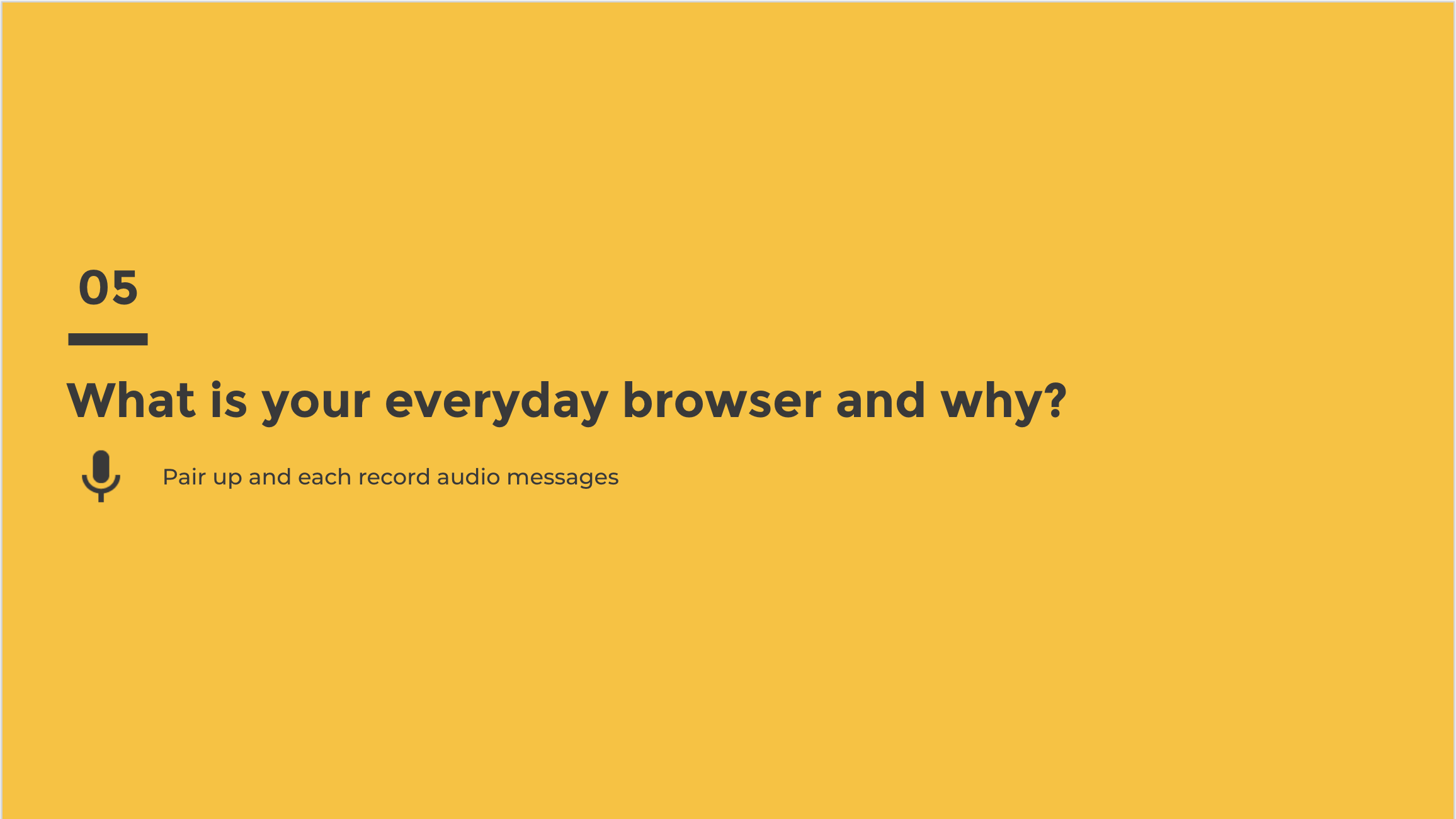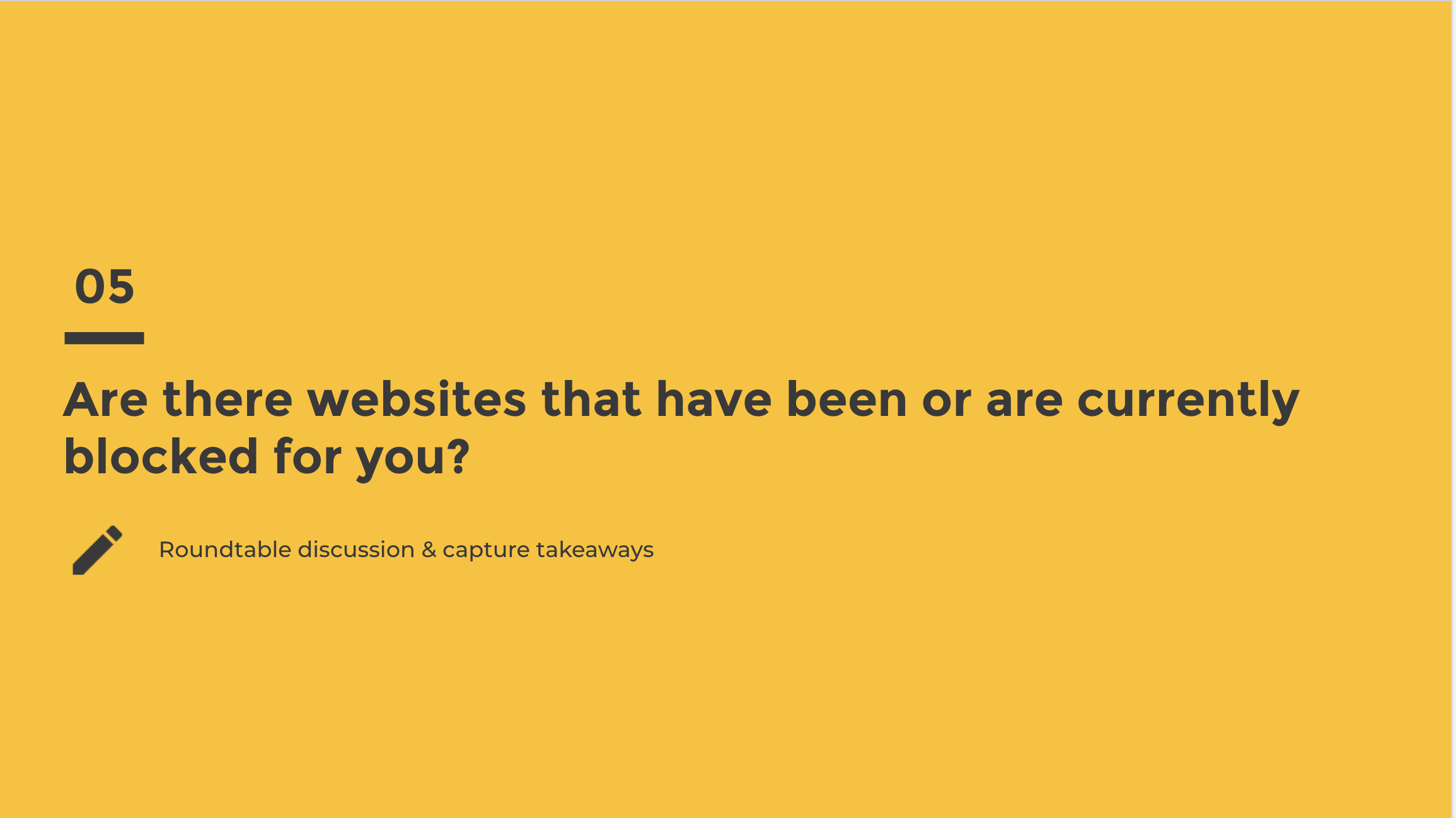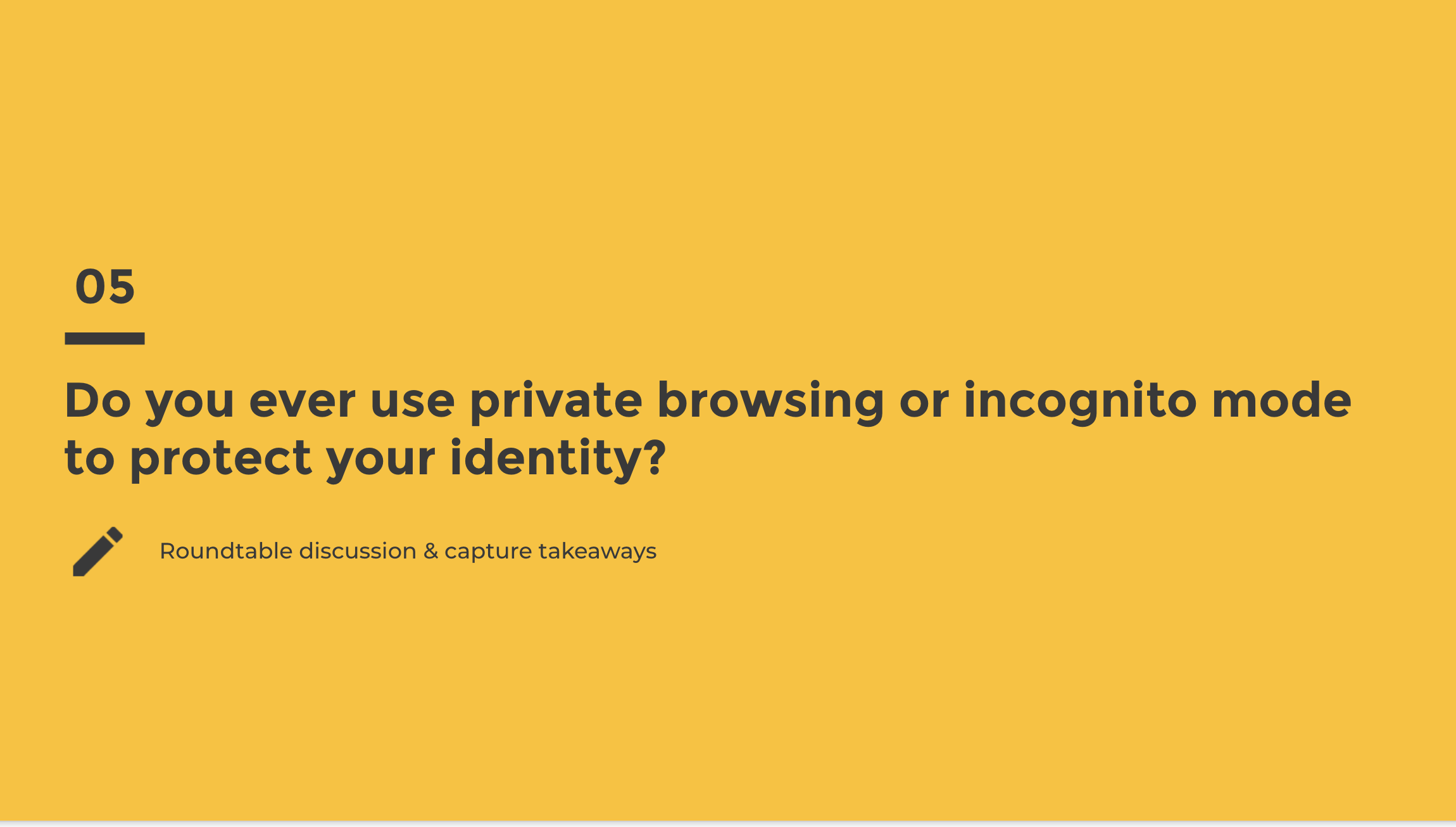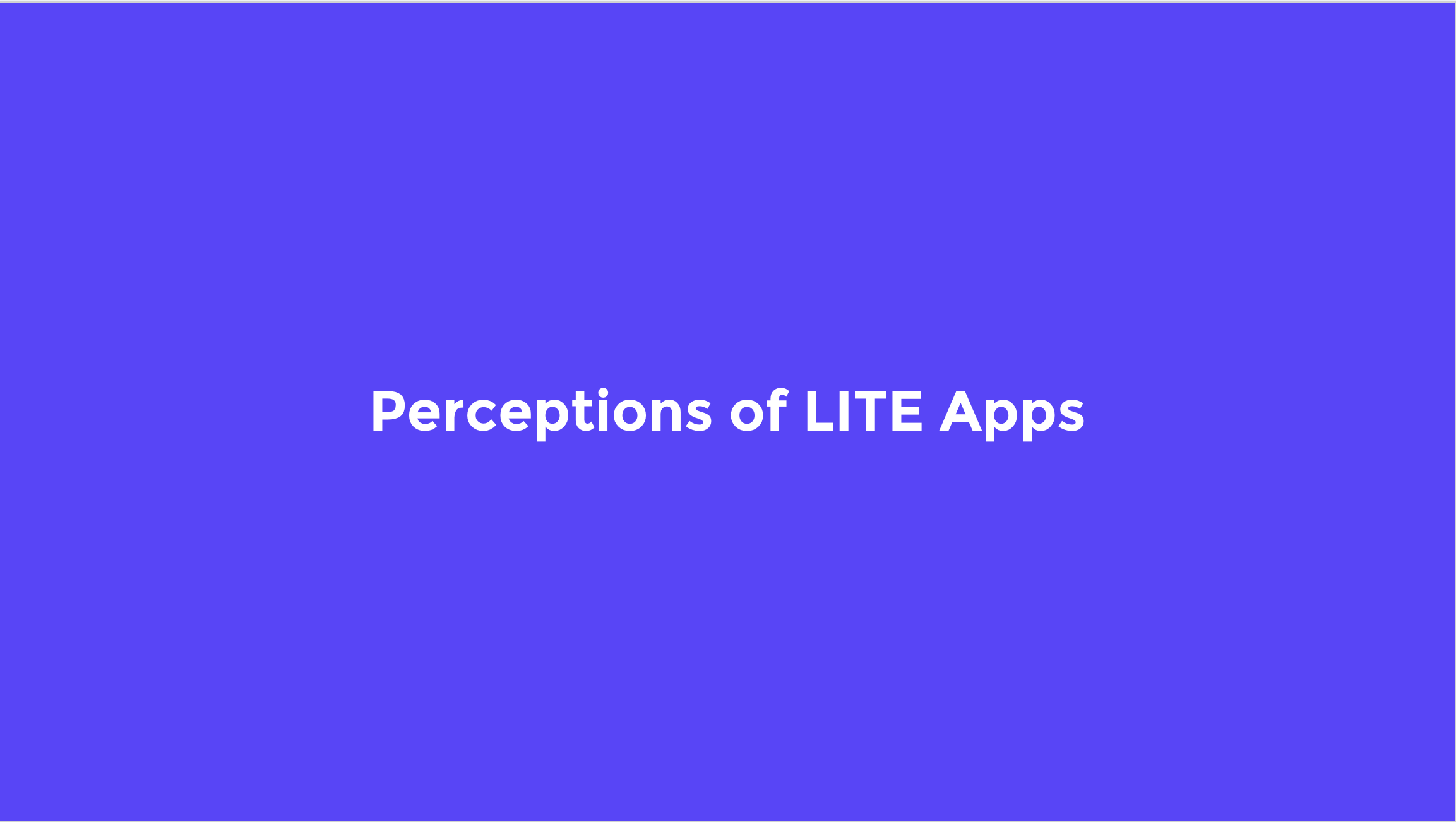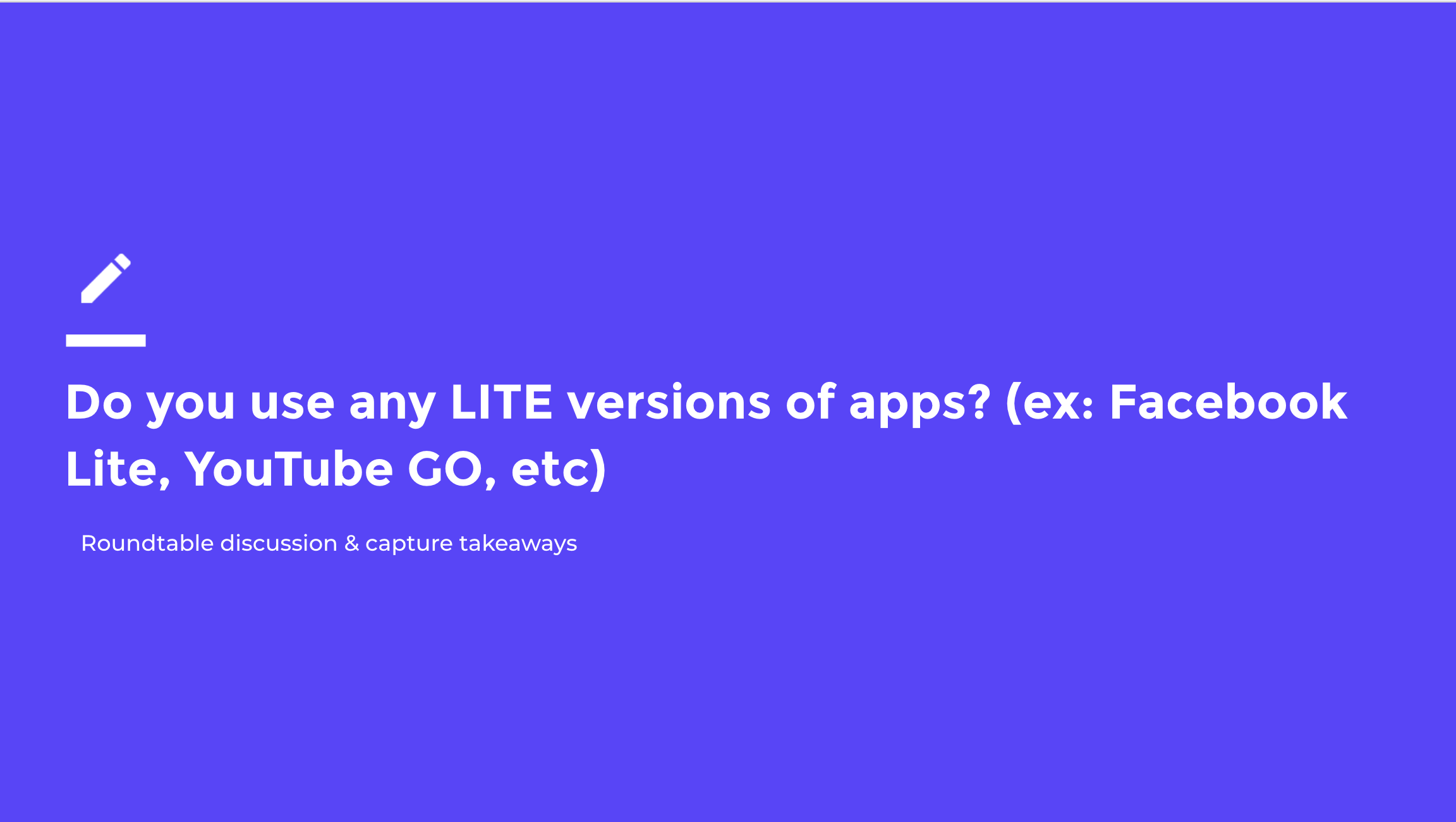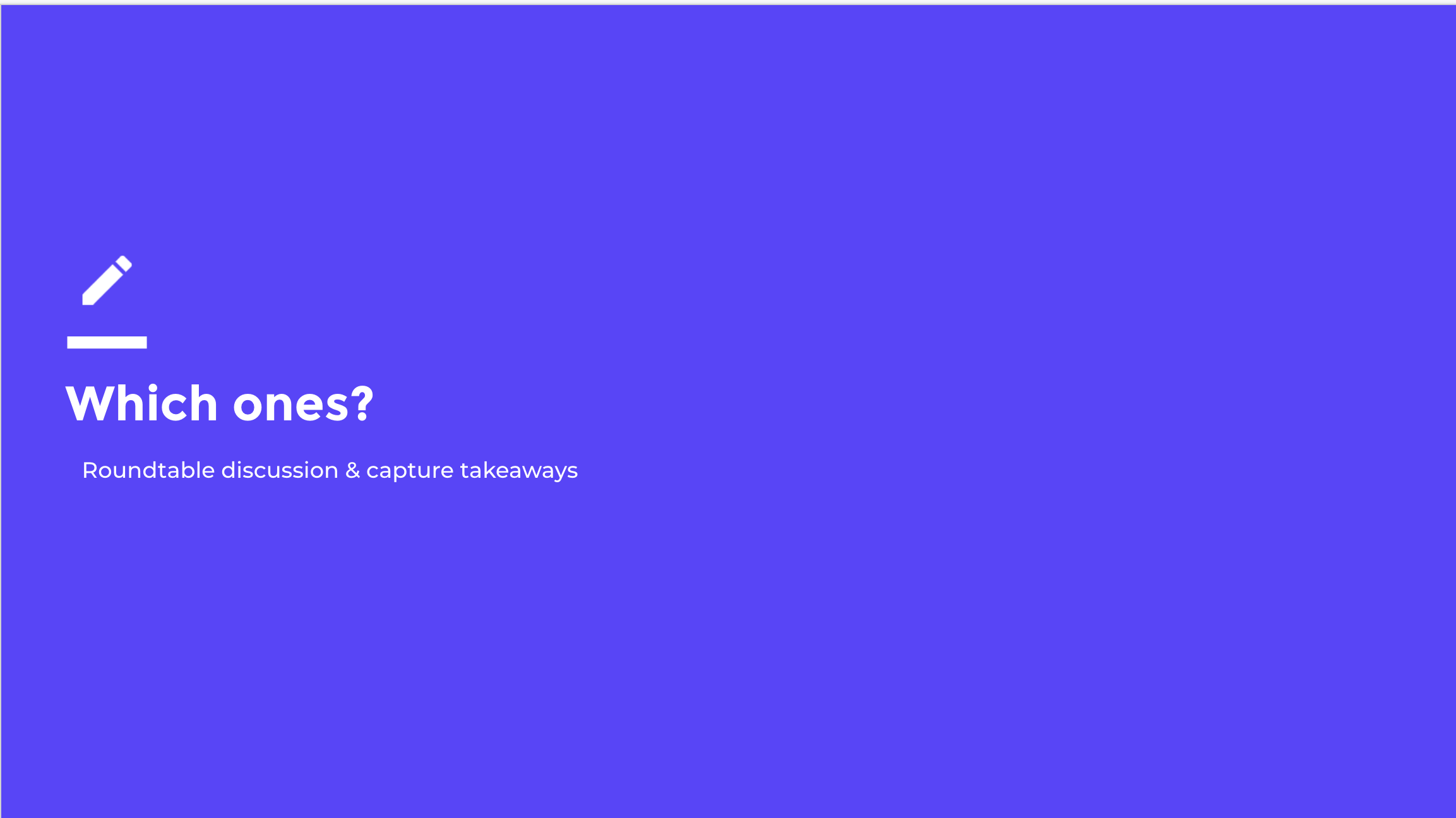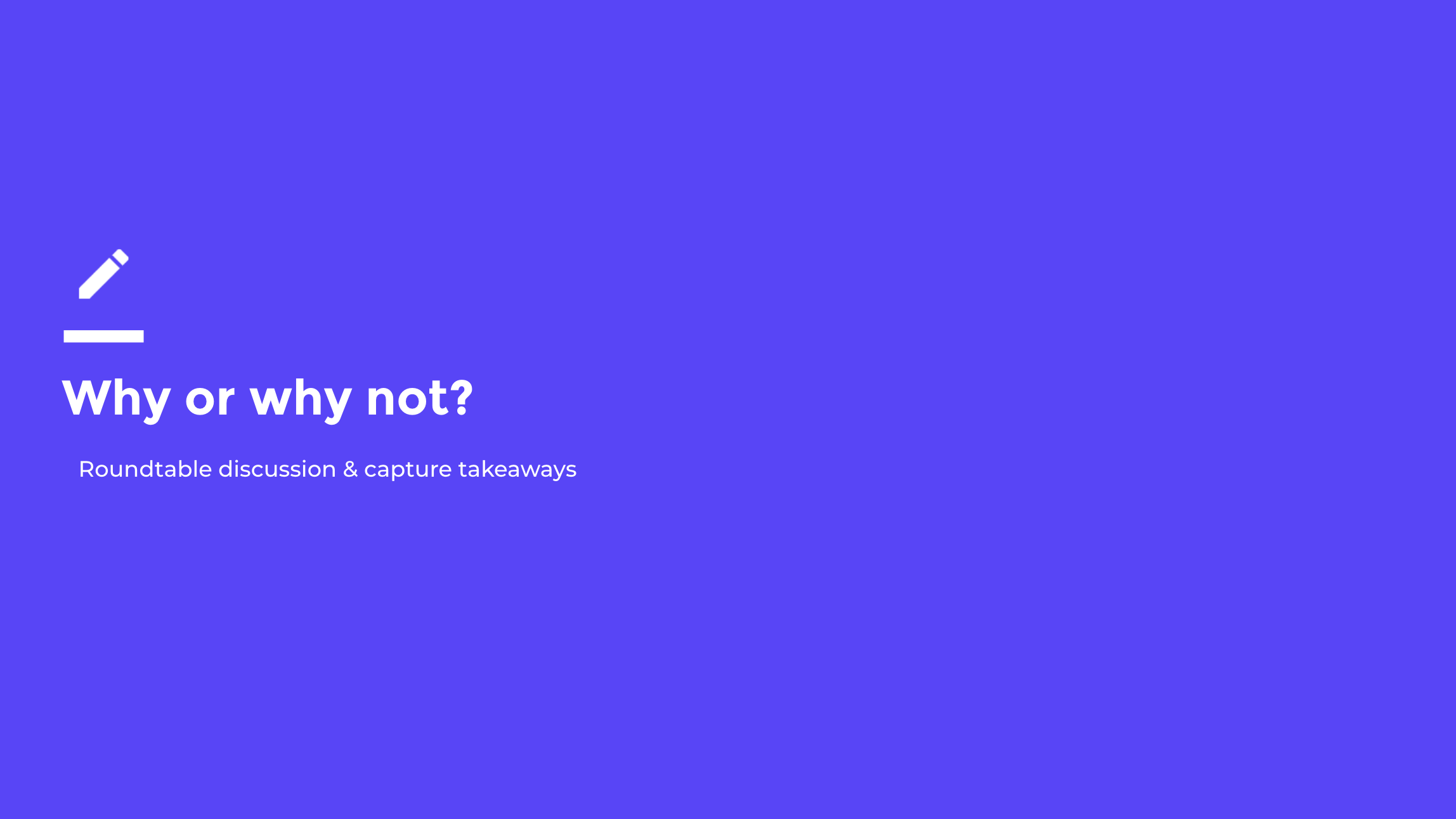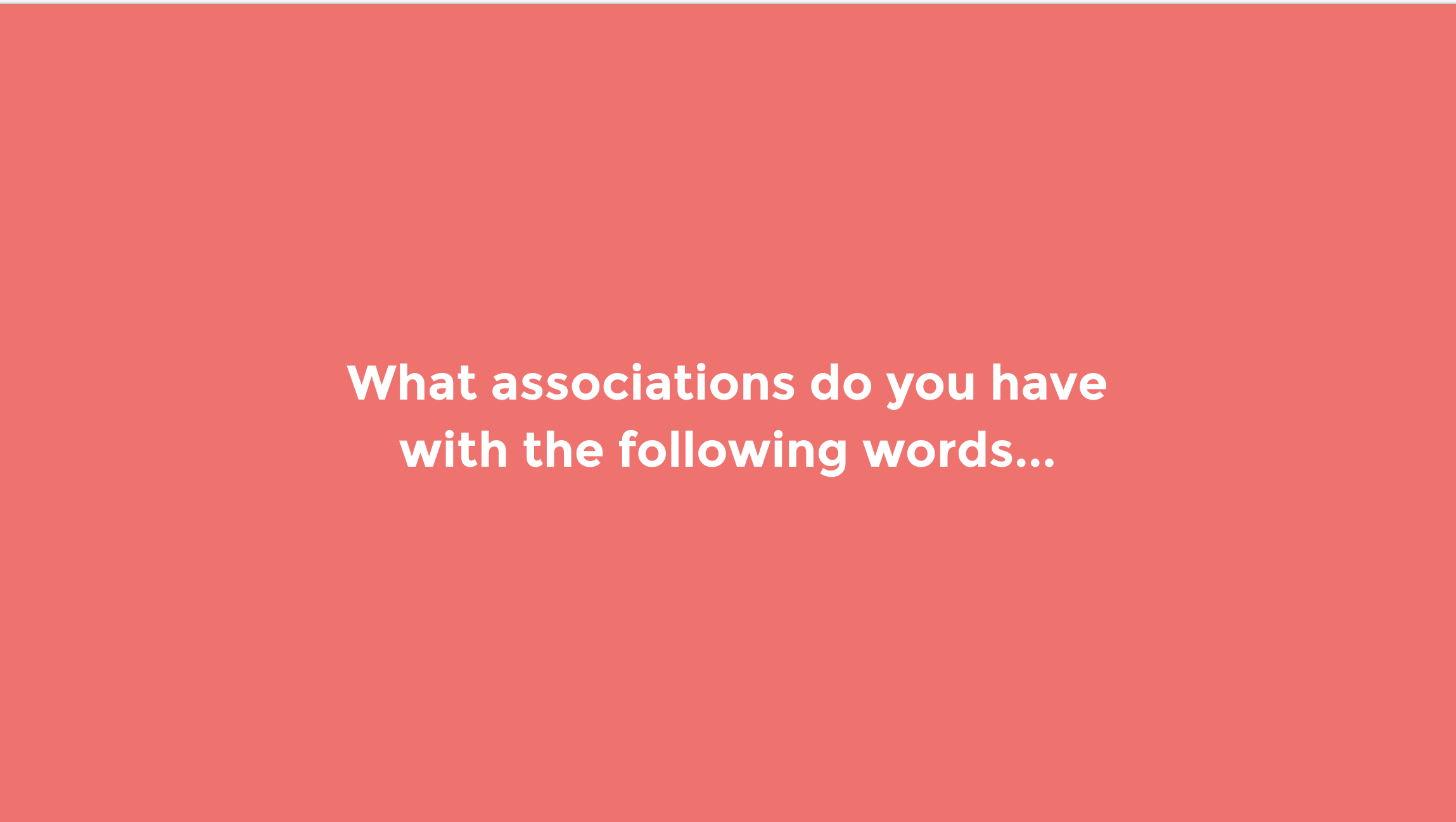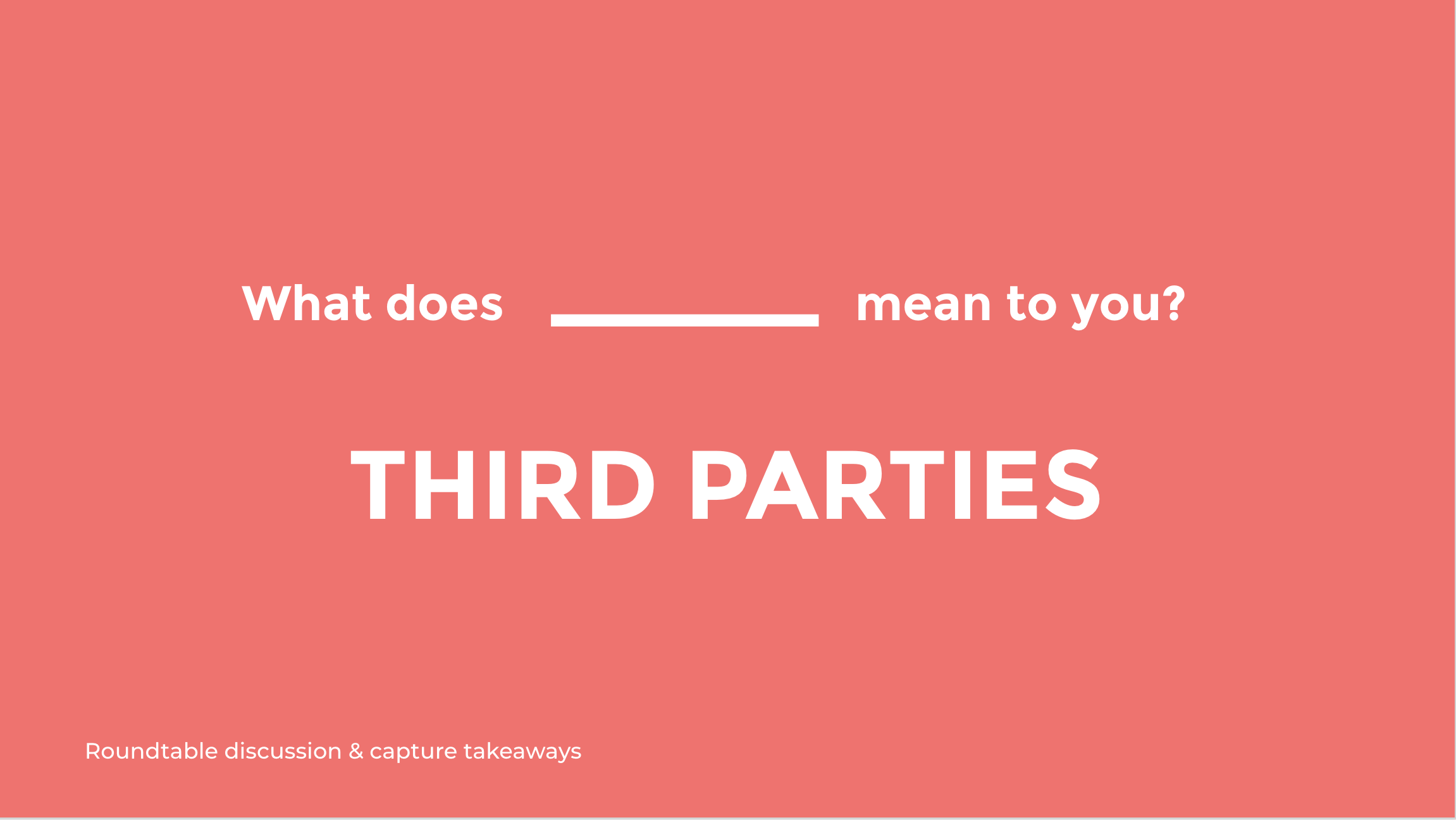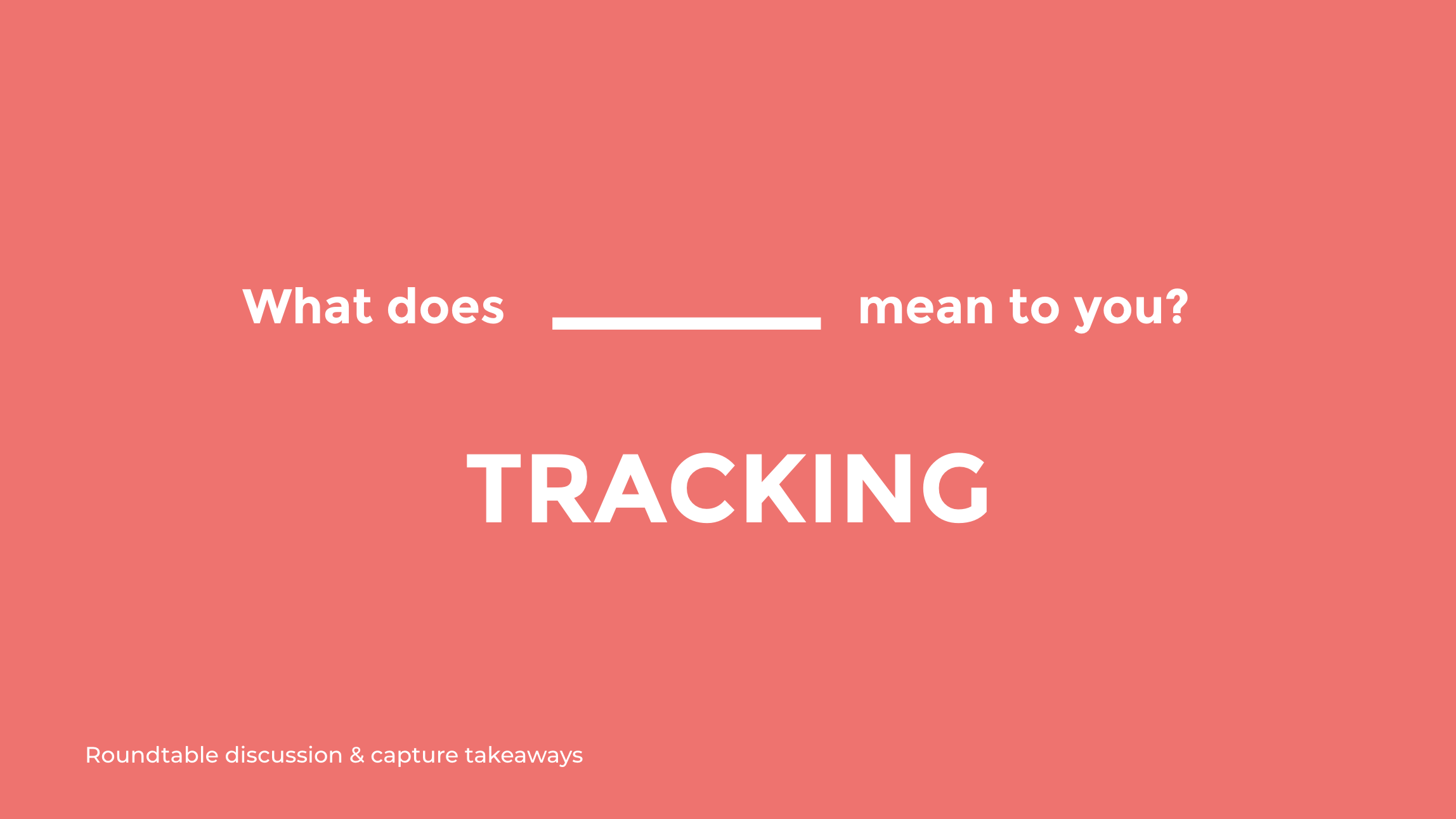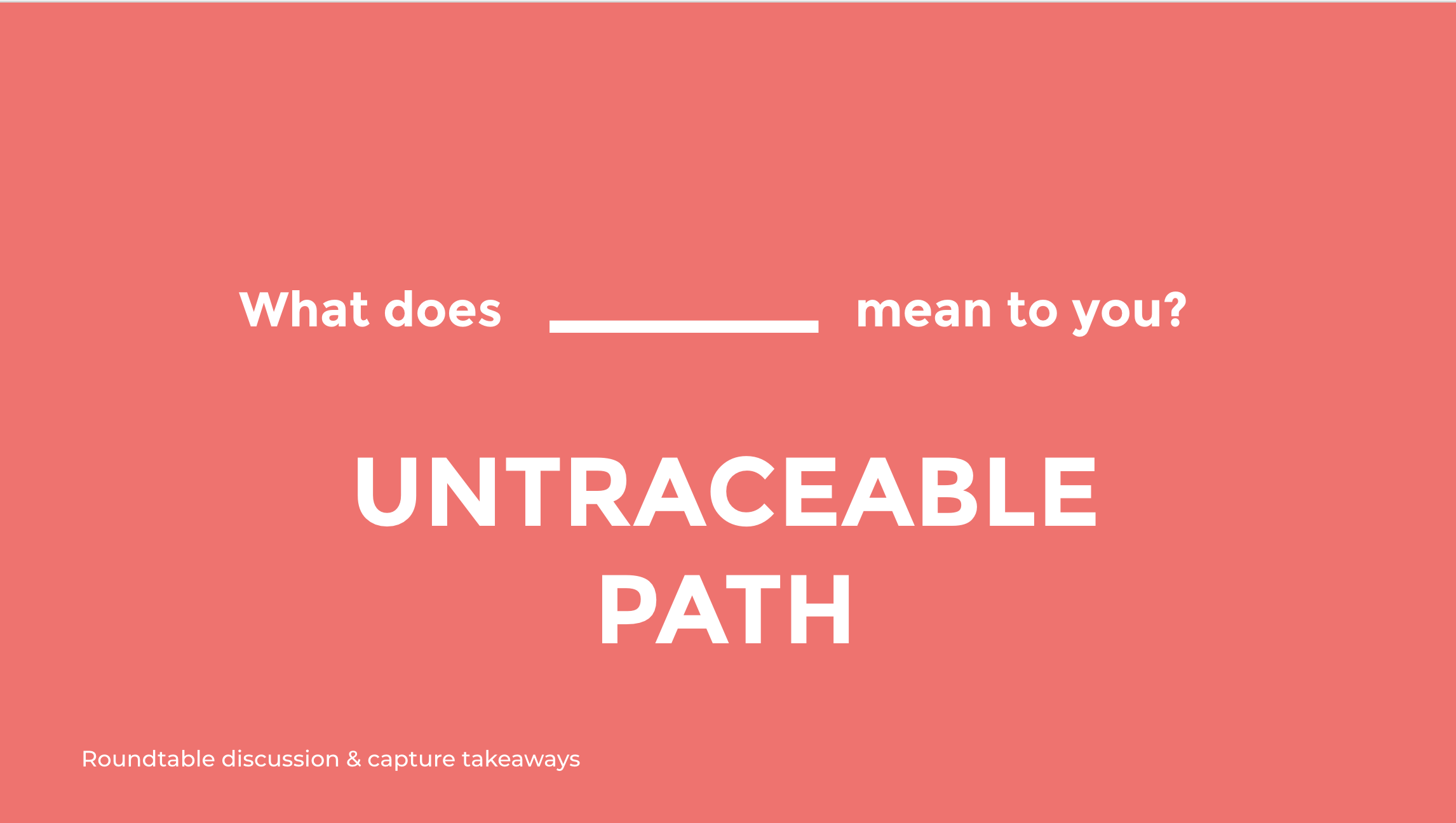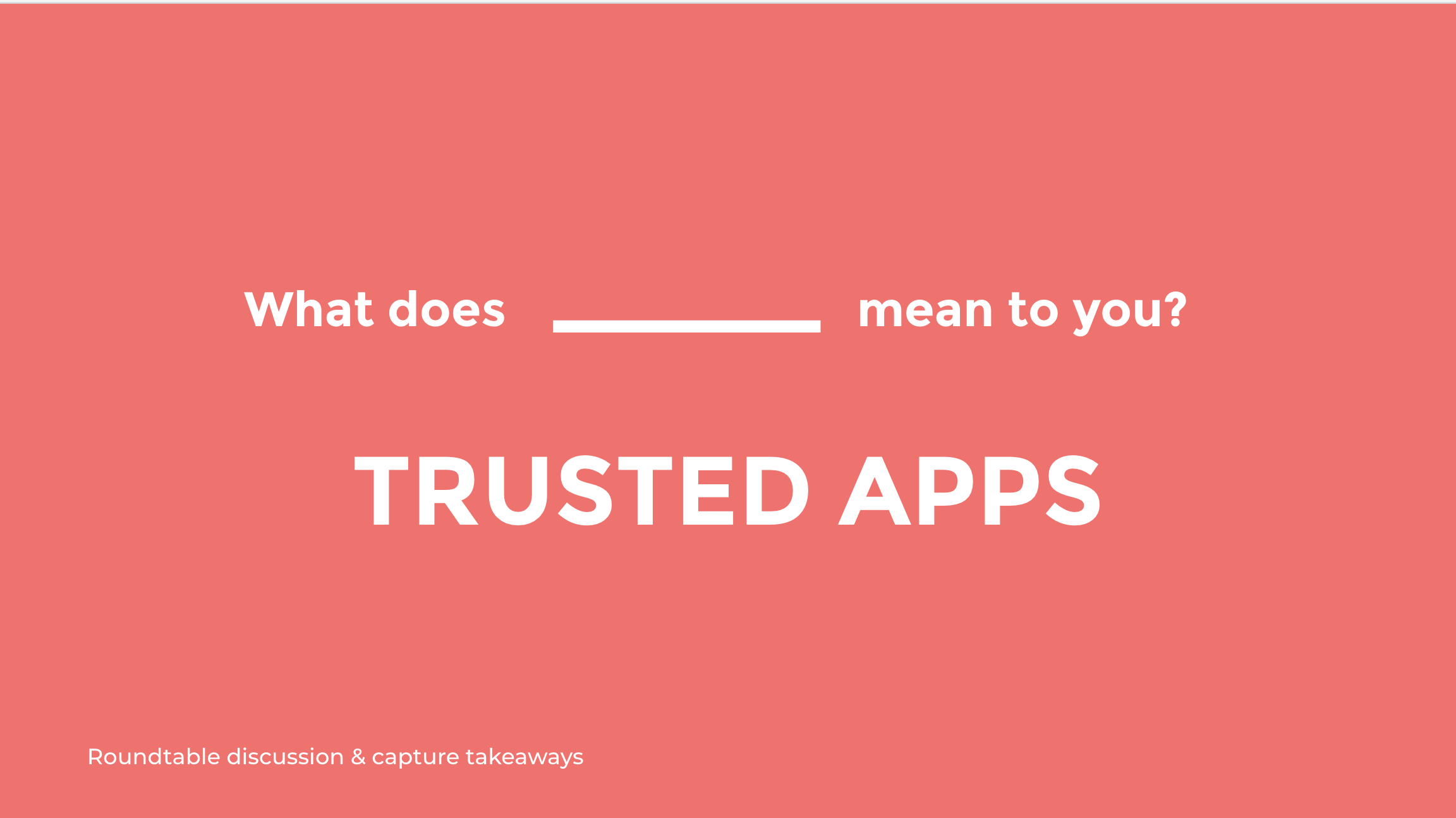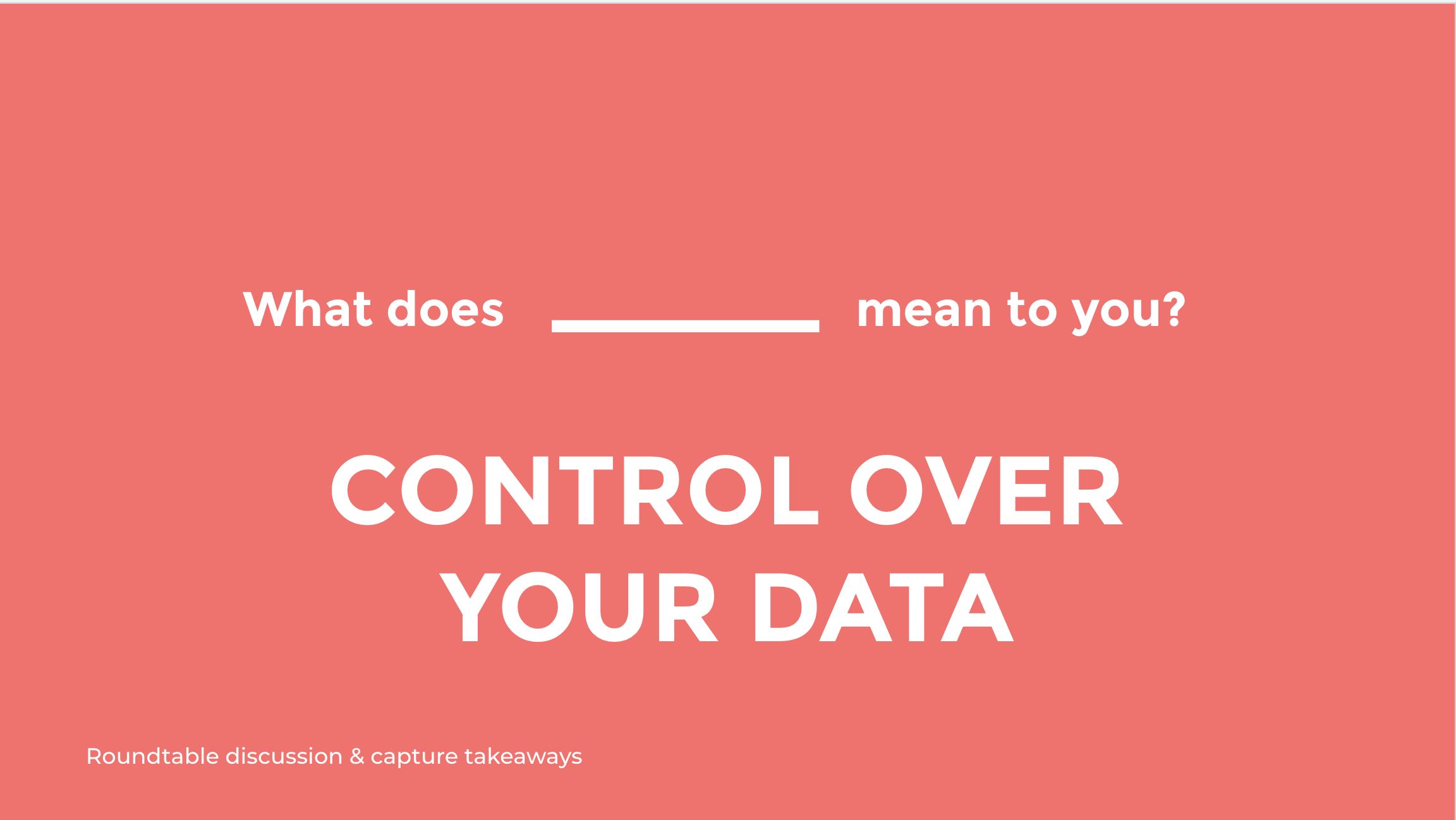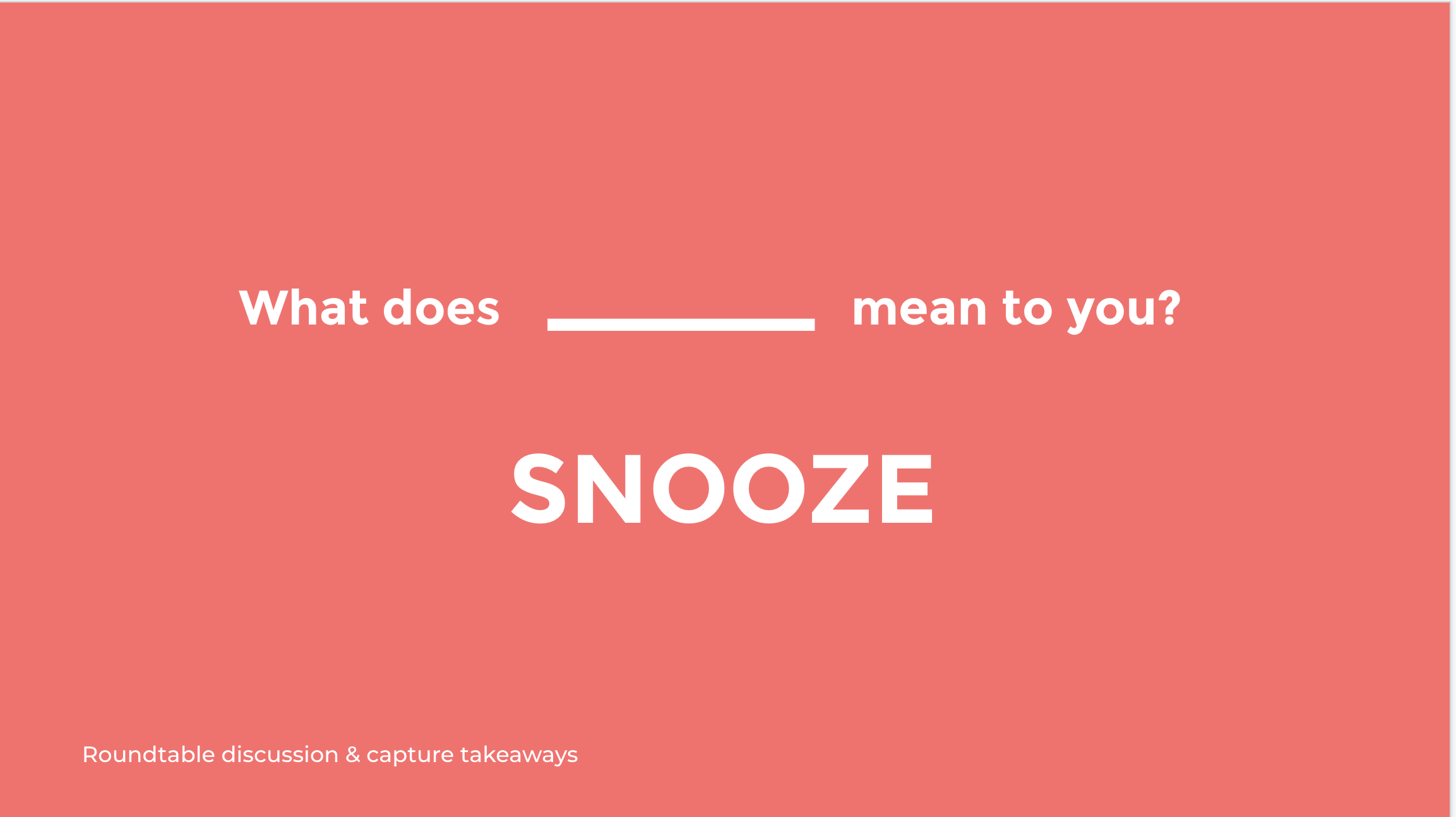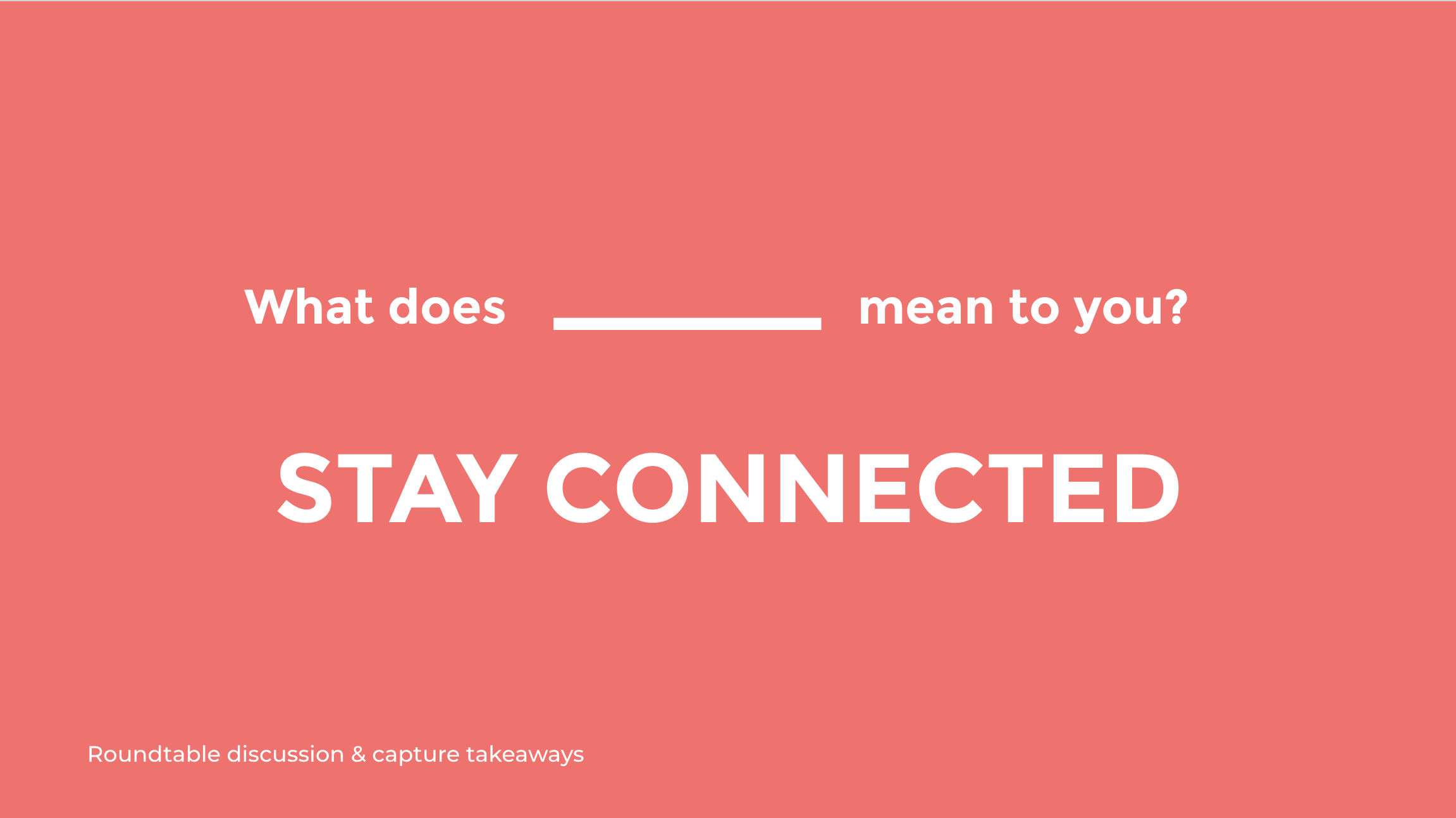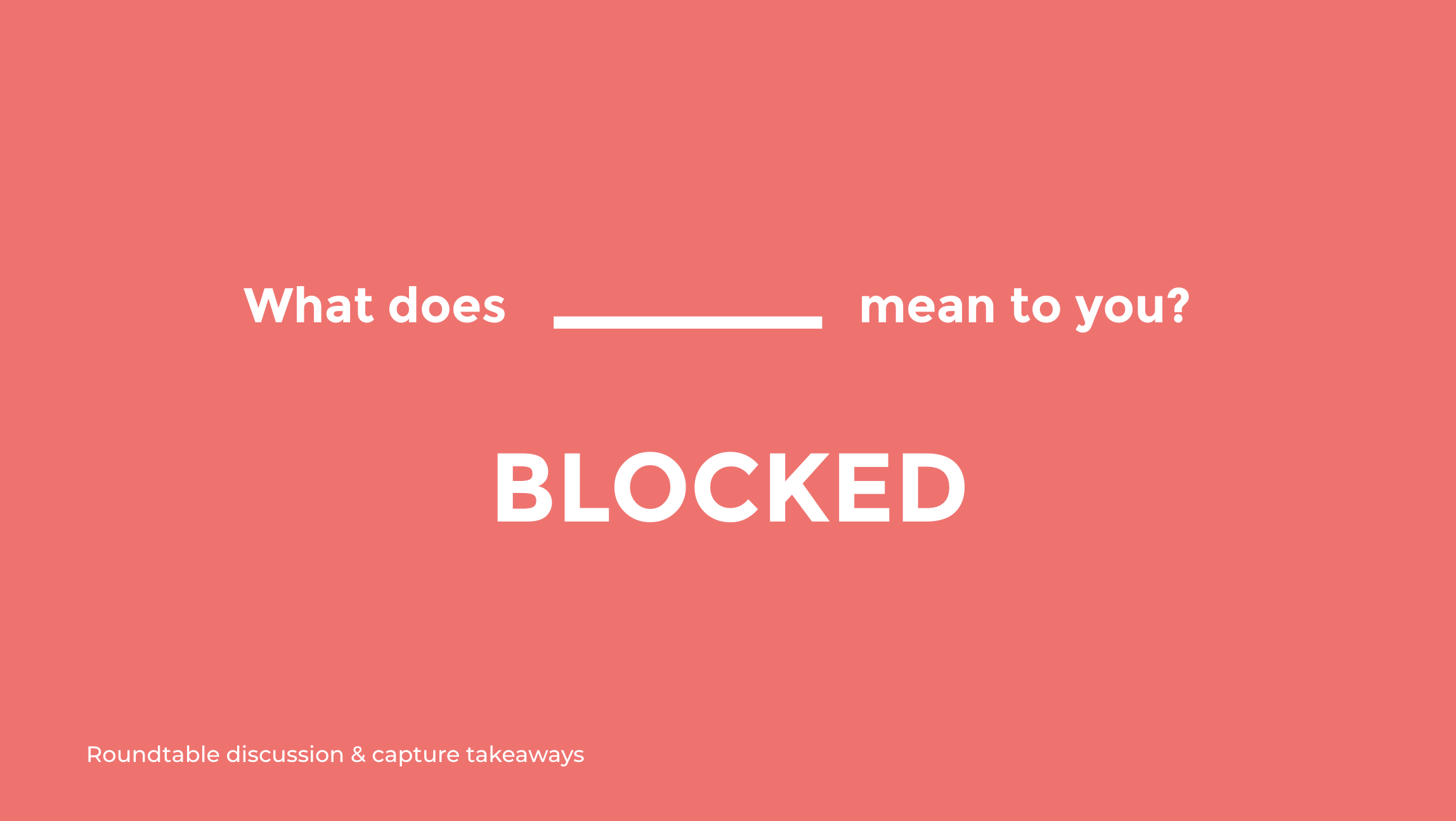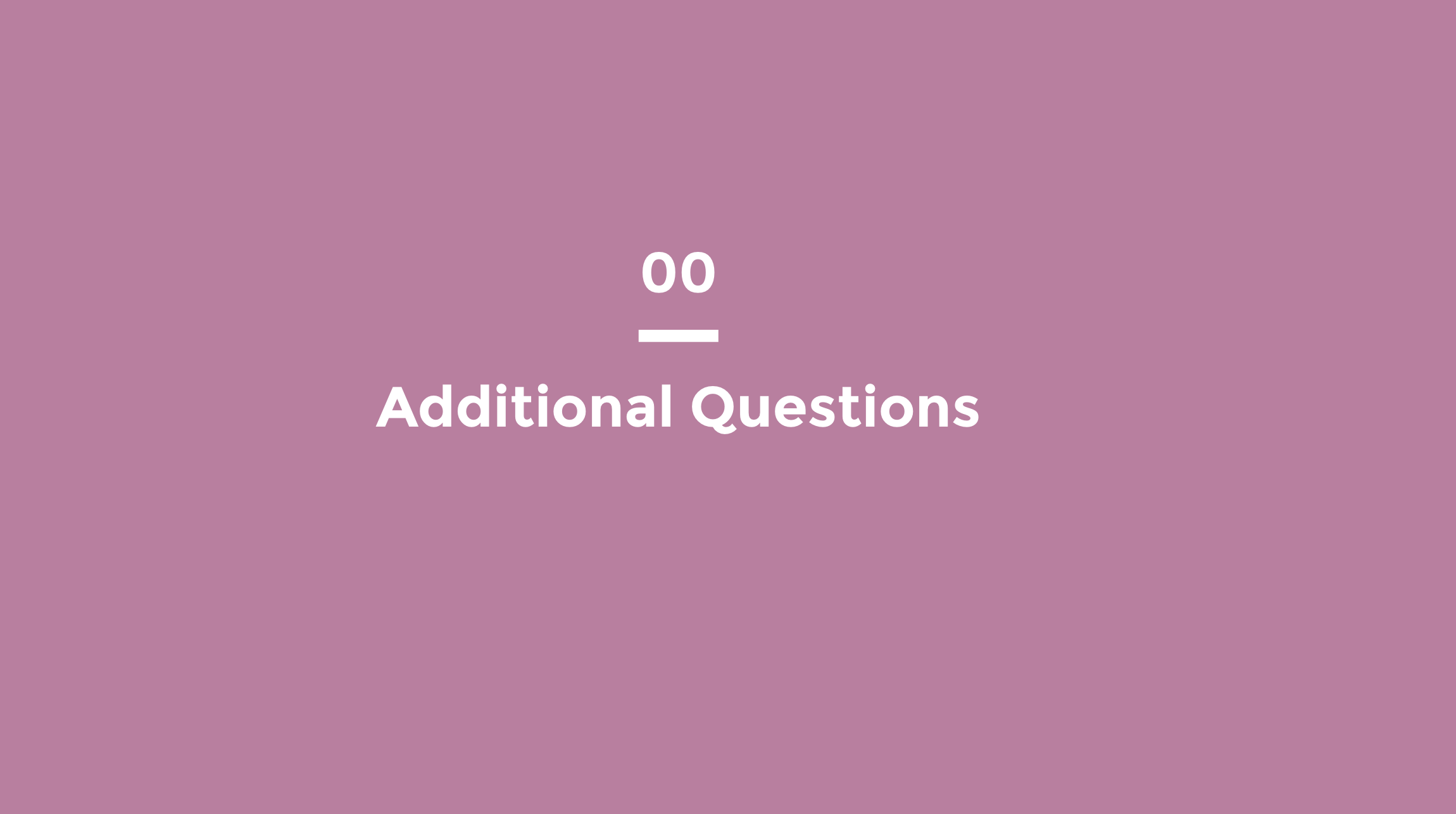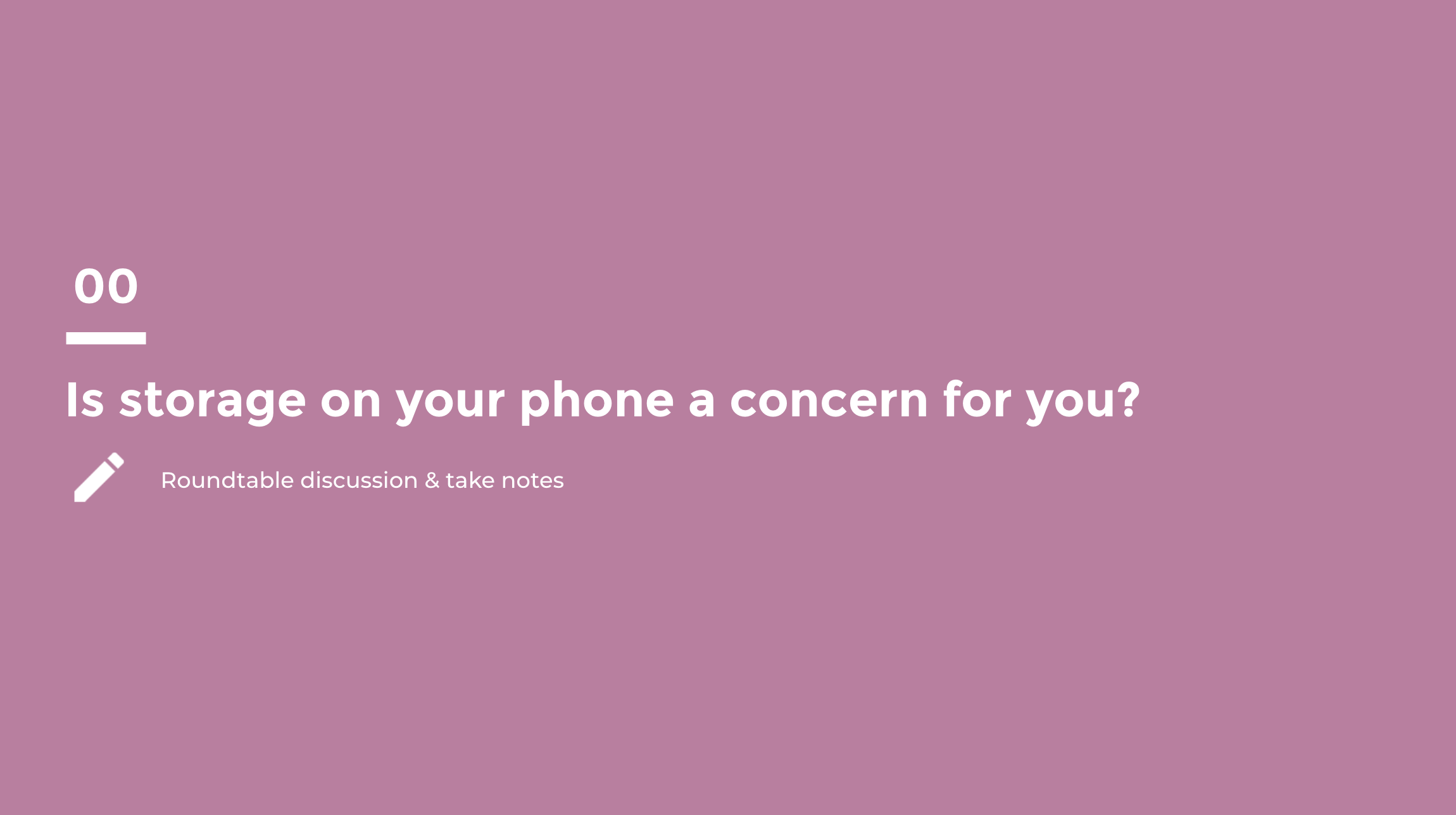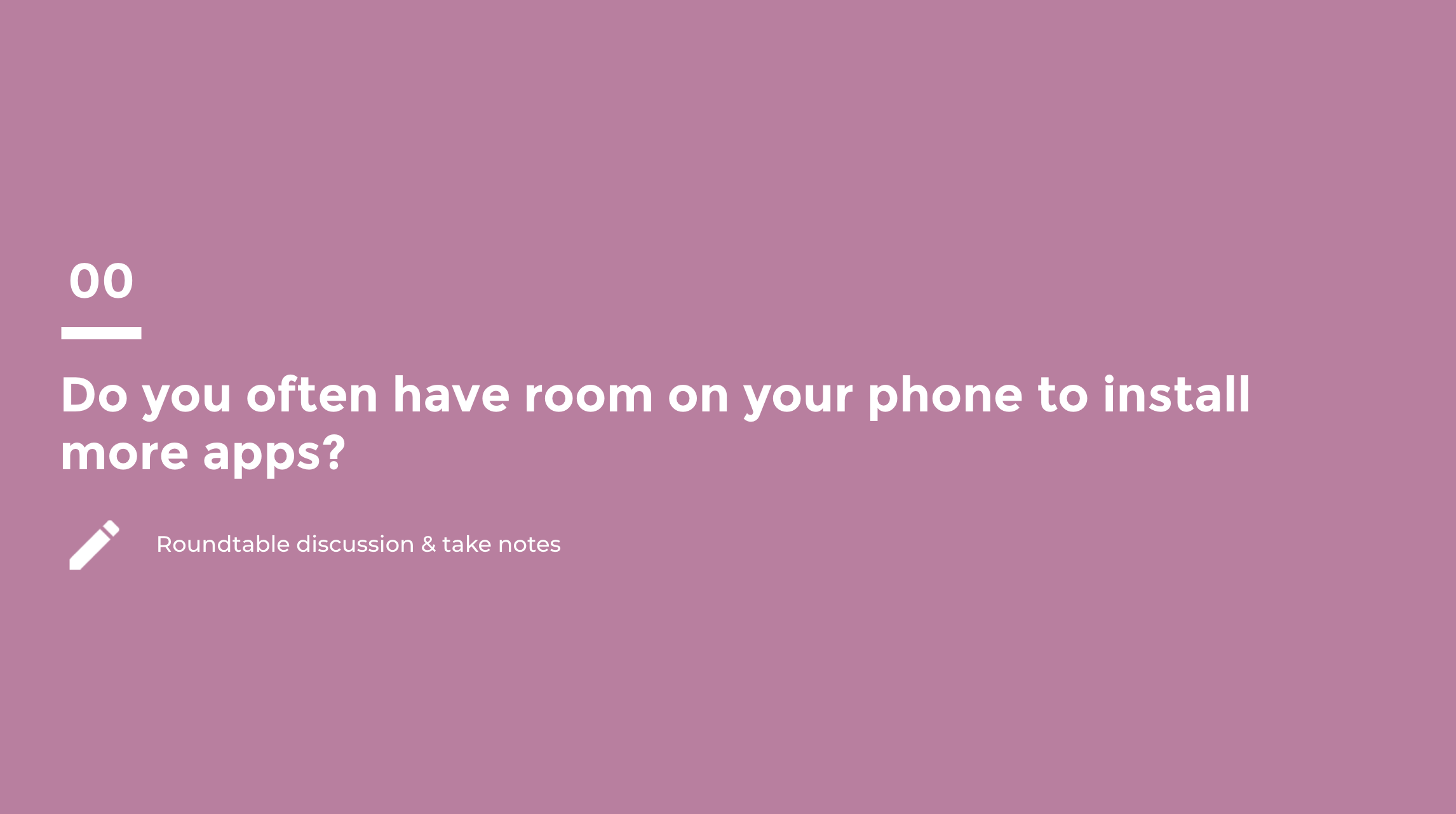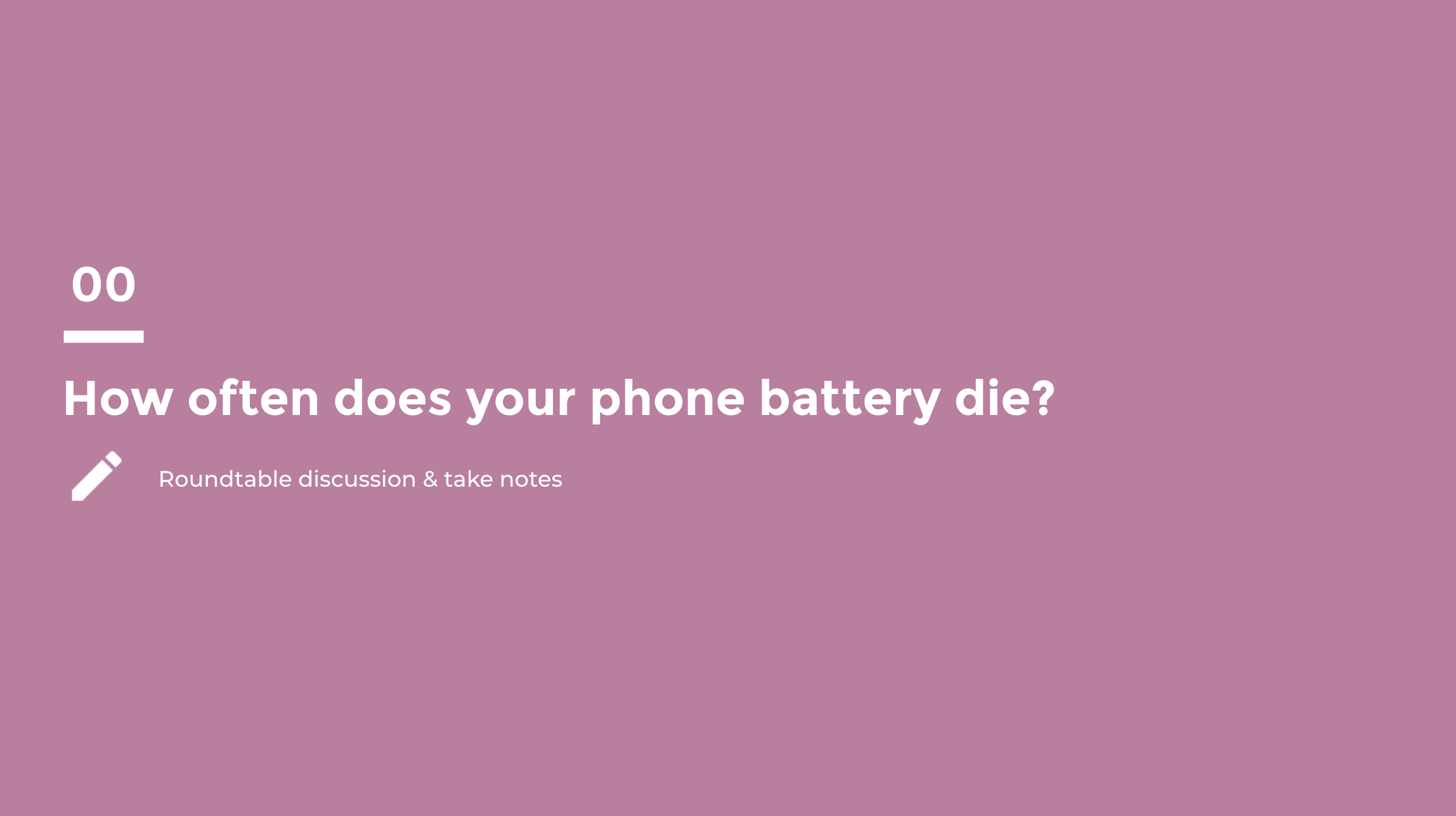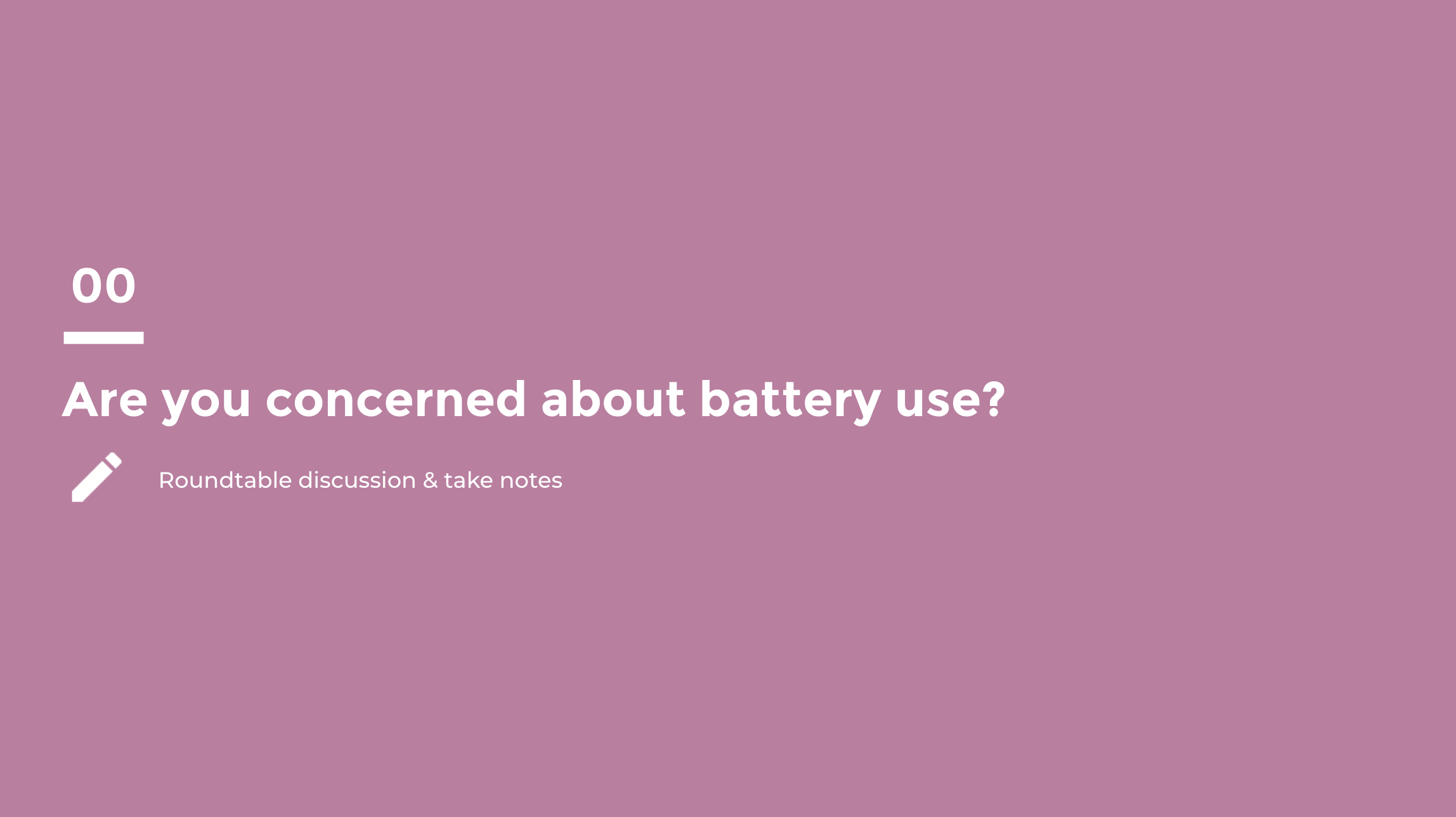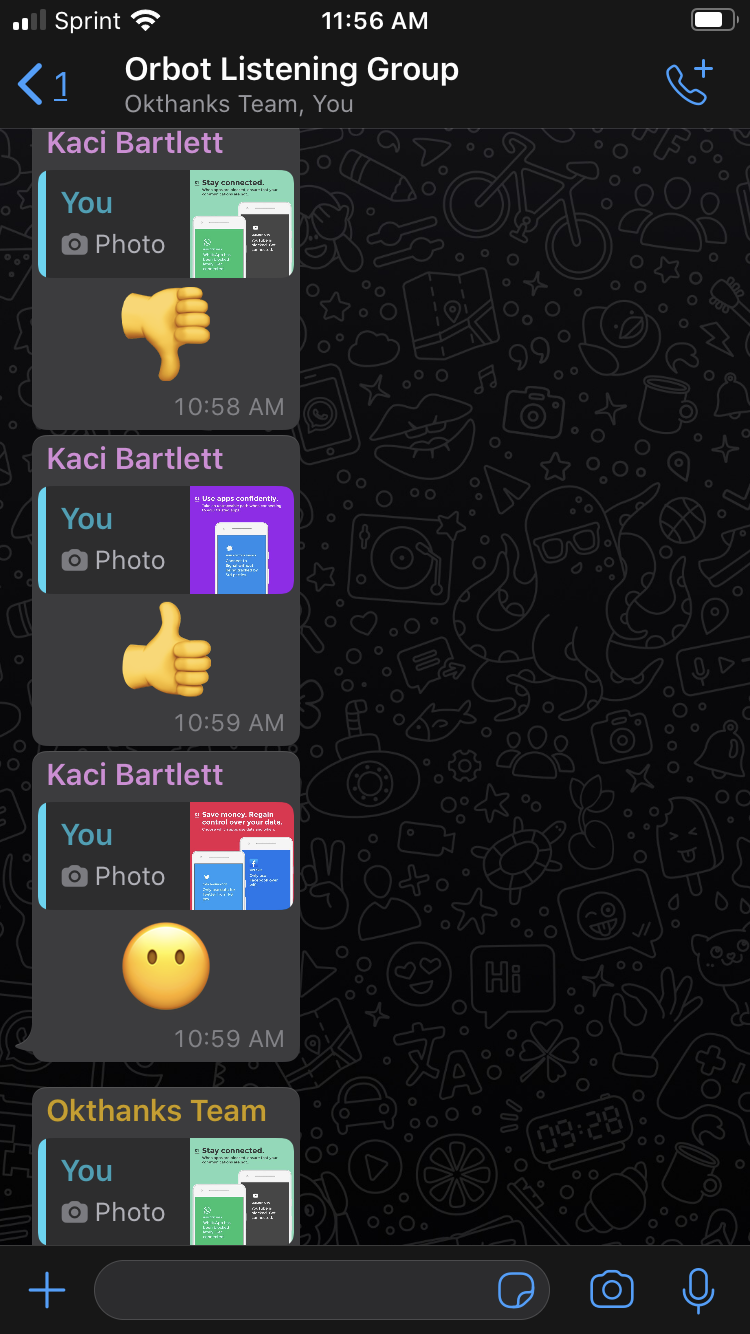Orbot Listening Groups
Today is the perfect time to talk about the importance of community and the value of working together to build solutions. Now is the time to listen, to connect, to extend our care and genuine concern to all we can. To share and spread solidarity to as many as possible.
Collaborative co-design methods have been part of our design process since the beginning. However as the world changes and health and finance limit travel, finding interesting, engaging and sustainable approaches to co-design are paramount. As many know, solutions to problems are more successful, relevant and adoptable, if the right people are involved in the process. This means getting the end users and vital stakeholders involved from the start.
The Birth of Listening Groups
This past year we teamed up with Guardian Project to discuss releasing a ‘mini’ version of Orbot. Orbot is a free proxy app that empowers other apps to use the internet more securely. Orbot uses Tor to encrypt your Internet traffic and then hides it by bouncing through a series of computers around the world.
For a mini version to work, we needed to downsize. To understand what to focus on, we needed to connect with communities most likely to use the lighter app. Thus, Listening Groups were born!
Listening Groups are like focus groups in that you gather a group of people together with the desired outcome of gathering feedback. It can be a challenge to establish trust without being physically present. We are always looking for better ways to engage and feel present even if we aren’t there. We rely heavily on trusted local partnerships. They are our lifeline to communities. Before beginning any Listening Group we first contacted our local partners and provided a brief about the project, the teams behind the project, the desired outcomes of a Listening Group and how we planned to use the submitted data. We then provided content forms for all participants. We chose to focus on five key capabilities. Once we had the content designed, we able to tailor content based on the desired platform use (WhatsApp, Google Slides, Signal and Zoom). We chose to structure our Listening Groups in a few ways to accommodate various presentation styles, various levels of security and anonymity.
How Listening Groups Were Adapted for Various Communities
For Zimbabwe:
Our local partner decided to hold an in-person Listening Group with about 10-12 participants.
We created a google slide deck with question prompts, practical examples and facilitator notes.
Localization Lab translated the slides into the local dialect.
Providing practical examples allowed participants to better understand the question being asked.
We sent a printable PDF of emoji faces for a fun, interactive, and anonymized way to gather feedback.
We joined a zoom call to offer our thanks and say hello!
Our local partner chose to audio record their Listening Group which provided us another level of comprehension and context.
For Uganda:
Our local partner decided to run a group WhatsApp chat.
We adapted the google slide deck to images that we could easily share through WhatsApp, which allowed participants to respond quickly using emojis.
Emojis were fun and quick ways to respond, but also provided very clear, concrete answers.
For Tanzania:
Our local partner coordinated zoom calls and WhatsApp chats.
We used emojis for a fun, interactive, and anonymized way to gather feedback.
We joined a zoom call with a few participants to conduct a more interactive approach and used the google slide deck to ask questions and get feedback.
For the MENA region:
Our local partner decided to create a survey.
We adapted the google slide deck to a format useful for our partners chosen survey platform.
Our partner wrote an introduction and distributed the survey to their network.
Individual Listening Groups:
We reached out to a few other contacts to conduct one on one Listening Groups
For these, we used Signal and WhatsApp channels to communicate the adapted google slide deck images and questions.
Lessons Learned
Overall it took a lot of coordination hours and a few rescheduled calendar appointments, but the ease and accessibility of WhatsApp and Signal groups allowed for some great feedback! Many expressed their like of the Listening Group process and the ease of participating. Analysis was quick and fairly straightforward because we used emojis to capture answers. We did find that the in-person Listening Group, although fun and insightful required the most effort for our local partner. It took about 2hours to run the session and then additional hours to write up their findings and synthesize their results. We were able to provide lunch and some compensation, but this was still a huge ask for the participants and local partner.
How To Tailor Listening Groups For The Now
We found Listening Groups to be an accessible and interactive way to involve community members and get feedback. Virtual Listening Groups rely heavily on community networks, but when working alongside trusted local partners this shouldn’t be a barrier. Due to current events, Listening Groups may be something you consider utilizing to understand how your community is doing during this time. You don’t need to use Listening Groups for work. Rather use them with a question prompt like, “How did everyone move their body today?” or simply “How are you?” allowing participants to respond with emojis, pictures, videos, or audios. You could even use Listening Groups to spur a mutual aid campaign in your community.

